animal cruelty
Developers pay to kill koalas in government scheme
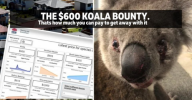 How much is a Koala worth? $600. We wish we were making this up but this is what you can pay per Koala to offset impacting their habitat. Where does the money go? Not to the animal rescuers who are picking up the pieces.
How much is a Koala worth? $600. We wish we were making this up but this is what you can pay per Koala to offset impacting their habitat. Where does the money go? Not to the animal rescuers who are picking up the pieces.
Australia's best environmental journalist Michael Dahlstrom (Yahoo) has today written something that pretty much shocked us. Property developers can pay money and absolve themselves of guilt. That money doesn't go to saving those animals. It's an "offset"
United States Kangaroo Protection Act supporters seek your support
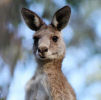 Over the past year, the Center for a Humane Economy worked closely with United States Representatives Salud Carbajal, D-Calif., and Brian Fitzpatrick, R-Penn., to formulate legislation to ban the trade in kangaroo-sourced products into the United States. When the “Kangaroo Protection Act” was introduced into Congress on February 9, 2021, word spread quickly throughout Australia by way of the press (ABC, Leader, The Australian, Sydney Morning Herald) and social media, for which we have many organizations to thank.
Over the past year, the Center for a Humane Economy worked closely with United States Representatives Salud Carbajal, D-Calif., and Brian Fitzpatrick, R-Penn., to formulate legislation to ban the trade in kangaroo-sourced products into the United States. When the “Kangaroo Protection Act” was introduced into Congress on February 9, 2021, word spread quickly throughout Australia by way of the press (ABC, Leader, The Australian, Sydney Morning Herald) and social media, for which we have many organizations to thank.
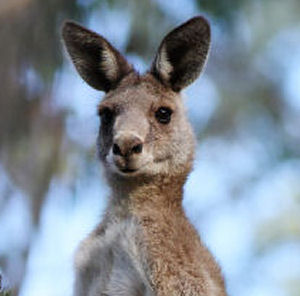
California already bans the trade in kangaroo products, and the Center is working to ensure that law is enforced. The effort to extend that ban to all parts of the United States can have a transformative effect and dry up one of the world’s most important markets for these products (principally, football boots). As we expected, the industries that profit from kangaroo killing understand the potential impact of this bill on their bottom line and have already started to aggressively fight back.
We’re writing to request your formal support of the bill, H.R. 917. You can read the language of the bill here.
The Kangaroo Protection Act would:
· Make it illegal to bring any kangaroo body part into the United States for commercial purposes, with an intent to sell or introduce it into interstate commerce.
· Direct the U.S. Secretary of the Interior, in consultation with other agencies, to issue regulations to carry out the Act and enforce its provisions.
· Allow citizens to bring actions in federal court to enforce the Act.
· Provide for criminal penalties of up to one year in jail and a $10,000 fine for each violation of the Act, and civil penalties of up to $10,000 per violation.
· Allow forfeiture of any kangaroo or kangaroo products in the possession of violators.
By banning the importation of kangaroo products into the United States, we hope to stem the killing of more than two million of these iconic marsupials each year. But first we must show members of Congress that a global coalition of advocates, scientists and leading animal protection organizations in Australia supports the aims of this proposed legislation. We need your support.
If you haven’t seen it, our short film, produced by filmmakers Gavin Polone and Derek Ambrosi, tells a compelling story in just 60 seconds of how a kangaroo becomes a product for purchase in countries like the United States.
Our ask: Will you please sign the statement [see below] of support for H.R. 917, The Kangaroo Protection Act? We would be grateful for your partnership in this endeavor to create sweeping change. If you have any questions, please do not hesitate to contact us.
Sincerely,
Jennifer Skiff Mitchell Fox
Perth, Australia Director of Advocacy
Statement of Support example, which you can just send email containing the information,
Support for the United States Kangaroo Protection Act
We support the purpose of H.R. 917, the Kangaroo Protection Act, introduced by Representatives Salud Carbajal and Brian Fitzpatrick into the United States House of Representatives in February 2021. The Center for a Humane Economy / Animal Wellness Action has permission to publicize our support of the bill to members of Congress, on its websites and social media channels, and in campaign materials.
Organization: ______________________________________________
Signed by: _________________________________________________
Title: _____________________________________________________
Date: _____________________________________________________
Please complete and return (scanned or photographed) to Mitchell Fox [email protected]. Or you can simply send us an email containing the information above.
Thank you.
Vet says, pictures prove Fraser Island dingoes are starving
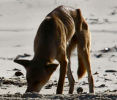
 Dr John Kingston, Veterinary Advisor to Australia's National Dingo Preservation and Recovery Program, says that the internationally beloved dingoes of Fraser Island (K'Gari) have all but disappeared from their beach territories as government authorities condemn survivors to a cruel death by starvation.
Dr John Kingston, Veterinary Advisor to Australia's National Dingo Preservation and Recovery Program, says that the internationally beloved dingoes of Fraser Island (K'Gari) have all but disappeared from their beach territories as government authorities condemn survivors to a cruel death by starvation.
Dr Kingston said he was appalled at the condition of dingoes observed during recent NDPRP visits to the island.
‘Dingoes said by government and animal welfare authorities to be naturally lean are revealed as starving and probably doomed to extinction in photographs taken on the island for the NDPRP’, Dr Kingston said. ‘Hip bones protruding, backbone, ribs, muscle wastage, are all evidence that there is not enough food for these animals.
‘The Fraser Island dingoes are a semi-domesticate, an apex predator unique in the world, in that they form a bridge between the wild and humanity. Upwards of 80% of visitors to Fraser Island-K’gari wish to see a dingo in the wild. Is it any wonder, with seeing dingoes in this emaciated state that people want to feed them?
‘I don’t believe there is any veracity in the argument that feeding dingoes makes them aggressive. There is no scientific evidence for this at all. And yet it is an argument consistently raised and repeated by government authorities and their scientific advisors. This false belief was shown to be based on misinterpreted data in a paper by Rob Appleby, Bradley Smith et al, and another by Arian Wallach and Adam O’Neill. Prior to 1994 when the feeding of dingoes was stopped on Fraser Island, there had never been an attack by a dingo on a human.‘Therefore,’ Dr Kingston says, ‘it is imperative that feeding of these dingoes commences. There is also no data to prove government statements that the dingoes will overpopulate the Island if supplementarily fed, as dingoes self-regulate their own numbers. These imaginary problems never occurred during the thousands of years the dingoes were fed. We call for random food drops immediately.’
The Queensland Parks and Wildlife Service, which has legal responsibility for the animals’ welfare has consistently rejected conservationist concerns.
And the RSPCA, which once warned that the QPWS could be prosecuted for animal cruelty over its use of dingo traps on the island, now seems to back management policies, also referring to ‘skinny dingoes’ which it says are naturally lean and in good condition.
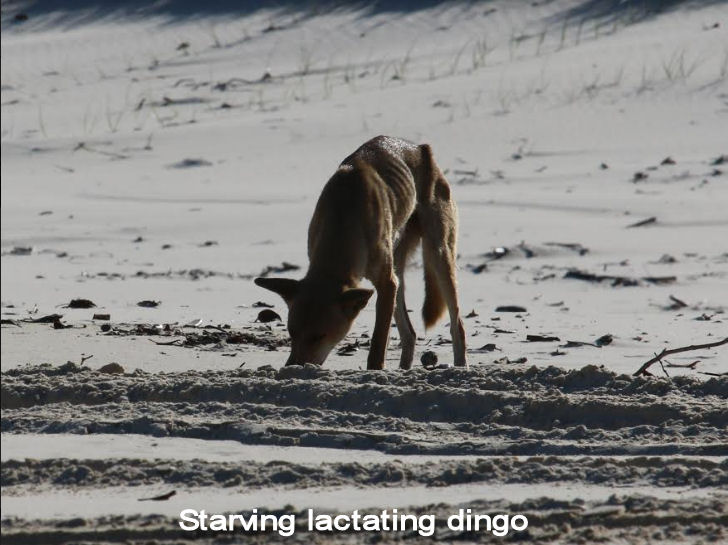
‘The photos show young females from the same territory, not old enough to reproduce and obviously not subject to pack support or discipline, now being pregnant, a sign of a species in crisis’, he said.
‘In a stable dingo pack, alpha females suppress breeding amongst other female pack members, so they are more able to help care for her pups and raise a successful litter.
‘Where are the animal ethics, and can we as a nation of animal lovers continue to watch as these animals slowly die a cruel death from starvation?
‘Do we wish for our overseas visitors to see the way we treat these precious iconic animals?
‘Where is Compassionate Conservation in all this?’
Dr John Kingston, BVSc,
Veterinary advisor
National Dingo Preservation and Recovery Program (Inc. A0051763G )(NDPRP)
Rethinking how to deal with animal cruelty in Australia
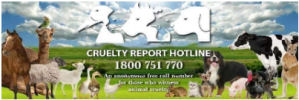 If the Minister for Agriculture were to endorse at least one officer from each local council under the Prevention of Cruelty to Animals Act 1986 (POCTA) provisions (section 18), this would add at least 120 new animal welfare officers/inspectors to combat animal cruelty within their area. This would alleviate the workload of authorised enforcement agencies i.e.( RSPCA/VicPol) in the town or city in which an alleged offence has occurred. A section should also be added into POCTA as it was back in the 80’s before it was repealed, that half of the fines from a successful prosecution be paid to council and the other half to state revenue. This would also give council an incentive to work toward costs as RSPCA now do subsequently no out of pocket expenses.
If the Minister for Agriculture were to endorse at least one officer from each local council under the Prevention of Cruelty to Animals Act 1986 (POCTA) provisions (section 18), this would add at least 120 new animal welfare officers/inspectors to combat animal cruelty within their area. This would alleviate the workload of authorised enforcement agencies i.e.( RSPCA/VicPol) in the town or city in which an alleged offence has occurred. A section should also be added into POCTA as it was back in the 80’s before it was repealed, that half of the fines from a successful prosecution be paid to council and the other half to state revenue. This would also give council an incentive to work toward costs as RSPCA now do subsequently no out of pocket expenses.
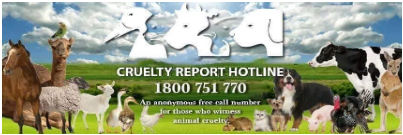
In the past I have advocated for an Independent Office of Animal Welfare, but further research and forward thinking has changed my mind and I therefore submit the following suggestions regarding the above.
There are 120 municipalities in the state of Victoria, each have a local laws team that deal with animals including the Domestic Animals Act and other related acts of parliament. Some councils/shires may already have their officers endorsed under section 18 of POCTA to enforce and act under the provisions of POCTA.
From the 120 councils/shires each have officers that total at least 1 and some 12+ in the bigger councils and towns i.e. Shepparton, Bendigo, Ballarat, Geelong and Casey. Casey was the first to prosecute under POCTA new puppy farm sections successfully. If the Minister would endorse at least one officer from each council under POCTA provisions (section 18) that will at least give animal welfare 120 + new officers/inspectors to combat animal cruelty within the region of their area.
This would alleviate the workload of authorised enforcement agencies i.e.( RSPCA/VicPol) in the town or city in which an alleged offence has occurred. Plus a section should also be added (into POCTA) as it was back in the 80’s before it was repealed, that half of the fines from a successful prosecution be paid to council and the other half to state revenue. This would also give council an incentive to work toward costs as RSPCA now do subsequently no out of pocket expenses.
Training of these officers are on par with RSPCA inspector, rangers having the opportunity of courses offered prior to starting their occupation at council. Court and prosecutions would also be on par with RSPCA procedures.
RSPCA could then engage in their policies of supplying pet ambulance services, animal rescues, education and rehoming.
Sincerely,
Barrie R Tapp
Animal Cruelty Hotline Australia; Dipl. equine studies, Police academy det training; JP.
Sanders Corp/Avril Group horrible farm-animal experiments - Europe

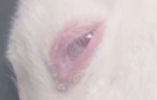
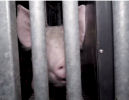
France: The Animal Protection Society and the Vegan Movement L214 revealed on Thursday 20 June 2019 new pictures taken in the first private Sourches European centre for research into nutrition of animals, in Saint-Symphorien, in Sarthe. We can see, notably, cows with portholes into their stomachs and chickens that are so heavy that they can hardly stand. The centre belongs to the Sanders Corporation, a leader in France in animal feed and an associate of the Avril group.
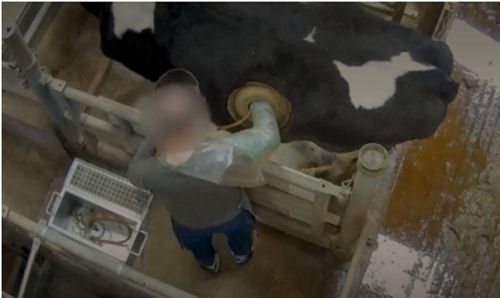
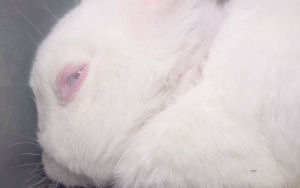
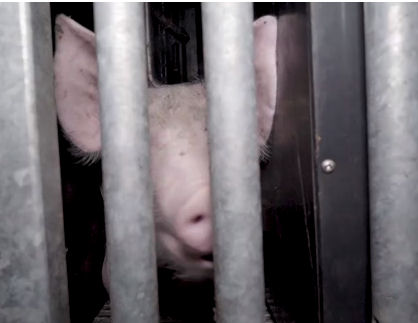
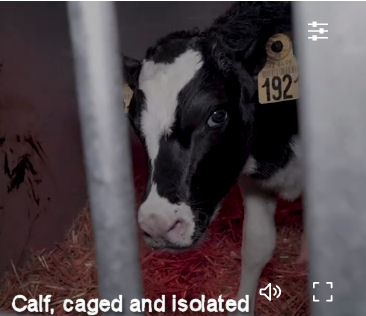
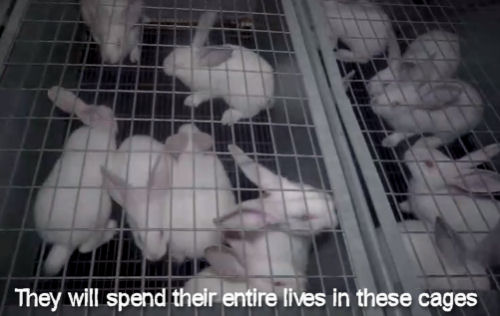
"The photos from this inquiry show cows with fistulars - their stomach is perforated by a hole 15cm in diameter - for the purpose of studying their digestion, says the society. The cows are forced to live shut inside a building with concrete floors, without straw, in their own excretions. L214 further equally decries the living conditions of hens which 'are unable to stand due to their constantly increasing growth.'" The society also blows the whistle on pigs, rabbits and baby chickens 'kept in cages that are empty of any comfort, whilst young calves are kept in separate stalls with opaque walls."
These cows produce five times the amount of milk daily that normal cows would produce. This destroys their skeletons by depleting calcium.
Information and pictures taken from text and videos at https://www.francetvinfo.fr/sante/alimentation/vaches-a-hublot-poulets-incapables-de-marcher-l214-porte-plainte-contre-un-laboratoire-de-recherche_3497521.html#xtor=EPR-51-[vaches-a-hublot-poulets-incapables-de-marcher-l214-revele-les-pratiques-d-un-laboratoire-de-recherche-dans-la-sarthe-et-porte-plainte_3498585]-20190620-[bouton]
Why is Victoria’s Agriculture Minister ignoring the law on cruelty to caged birds?

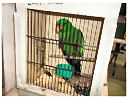 Thousands of pet birds in Victoria will be subjected to totally unnecessary, inexcusable and inhumane stress after Agriculture Minister Jaala Pulford rubber-stamped a request from bird keepers to ignore Victorian law relating to the sale of non-native birds, warns Animal Justice Party president, Bruce Poon. According to Victorian law, bird species which originated outside Australia cannot legally be sold in Victoria except from pet shops and private residences.
Thousands of pet birds in Victoria will be subjected to totally unnecessary, inexcusable and inhumane stress after Agriculture Minister Jaala Pulford rubber-stamped a request from bird keepers to ignore Victorian law relating to the sale of non-native birds, warns Animal Justice Party president, Bruce Poon. According to Victorian law, bird species which originated outside Australia cannot legally be sold in Victoria except from pet shops and private residences.
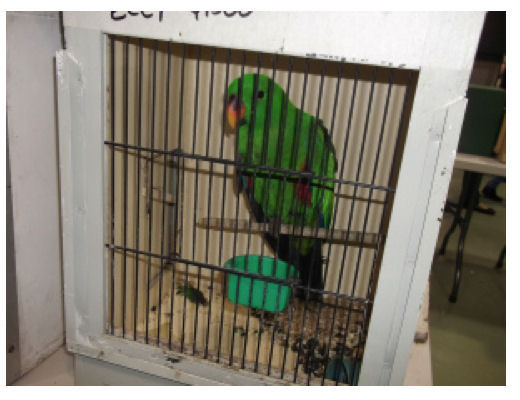
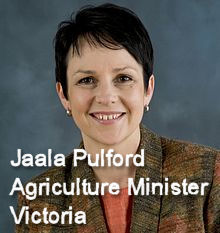
Animal Justice Party president Bruce Poon said “The meaning of this law is clear and straightforward. It means that those birds cannot be removed from their normal locations and taken to sales such as those organised by bird clubs associated with the Victorian Avicultural Council”.
According to Poon, the Minister’s move is a disgrace.
“The minister should have greater regard for the welfare of the birds, which are taken from reasonably-sized aviaries and then stressed by being put into tiny boxes to be taken to sales where they are subjected to prodding and up-close-and-personal examination by hundreds of people for up to six hours,” (see photos below)
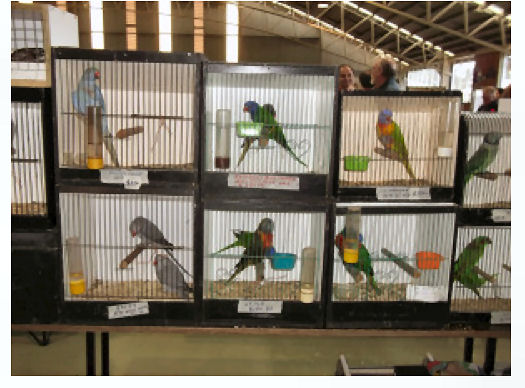
“It is especially upsetting because the clubs, urged on by the Victorian Avicultural Council, had previously flouted the law by displaying non-native birds at sales, supposedly not for sale, but with mobile phone numbers on the boxes clearly intended for the purpose of communicating sales.”
“By doing that bird keepers made an ass of the law and of the Minister, facilitating illegal sales, treating the law with complete contempt and subjecting birds to needless stress, all in the name of profit,” Mr Poon said.
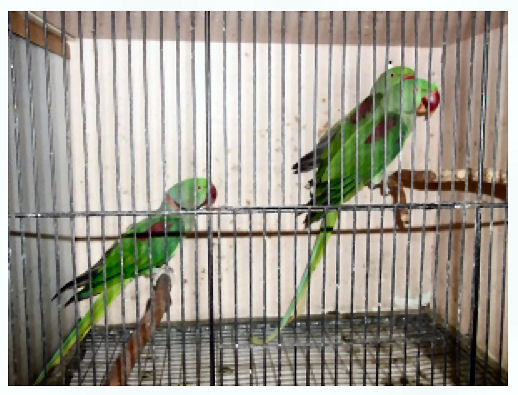
“The Animal Justice Party, which is greatly concerned for the welfare of those birds, urges the Minister to cancel the exemption she granted which allows non-native birds to be sold at bird sales in Victoria.”
An ecological and humanistic response to Breunig & Fabian's defense of massive immigration to Australia
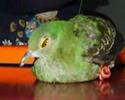
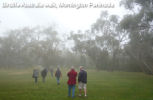
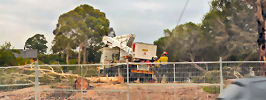 I found what struck me personally as egregious growthist propaganda dressed up as an academic research article on The Conversation, yesterday: "Blaming immigrants for unemployment, lower wages and high house prices is too simplistic." [February 23, 2018 11.26am AEDT]. The article was headed up by professor of economics, Robert Breunig from the Crawford School of Public Policy, Australian National University, and co-authored by Mark Fabian, Postgraduate student, Australian National University. Professor Breunig disclosed that he receives funding from the Productivity Commission, which I think is a leopard with continuously changing arrangement of spots according to whatever political background it needs to blend into for survival. Leith van Onselen's debate with Migration Council's CEO Carla Wilshire of the on the ABC’s National Wrapdocumented here, seems to illustrate this, but for all I know the professor and his student actually believe what they write.
I found what struck me personally as egregious growthist propaganda dressed up as an academic research article on The Conversation, yesterday: "Blaming immigrants for unemployment, lower wages and high house prices is too simplistic." [February 23, 2018 11.26am AEDT]. The article was headed up by professor of economics, Robert Breunig from the Crawford School of Public Policy, Australian National University, and co-authored by Mark Fabian, Postgraduate student, Australian National University. Professor Breunig disclosed that he receives funding from the Productivity Commission, which I think is a leopard with continuously changing arrangement of spots according to whatever political background it needs to blend into for survival. Leith van Onselen's debate with Migration Council's CEO Carla Wilshire of the on the ABC’s National Wrapdocumented here, seems to illustrate this, but for all I know the professor and his student actually believe what they write.
Jobs! The plaintive refrain and the crocodile tears...
Criticising ex-PM Tony Abbott's extremely belated calls for reducing Australia's immigration-fed overpopulation problems, Breunig and Fabian write, “But migrants also bring capital, investing in houses, appliances, businesses, education and many other things. This increases economic activity and the number of jobs available.” It sounds like they are describing molecules in a heated gas.
Increasing economic activity increases impact on our environment and politically disempowers us
Increasing economic activity increases impact on our environment and politically disempowers us. Massive population growth in this country is removing our choices of what we can buy with money, whilst inflating the cost of the reduced amenity and shelter that population growth is causing. That's impoverishing. Just on the business side, the cost of premises and paying wages so that employees can afford housing makes Australian businesses globally uncompetitive and provides an explanation for their mysteriously high rate of failure.
I am going to talk about how changes to laws and standards as to how our natural environment and urban spaces are treated and our rights within them are taking place without any meaningful public discussion or empowerment in order to allow growth to proceed.
Breunig and Fabian's article completely ignores the beautiful non-human environment we have in Australia, the green bits of which are being cut up into biogeographical islands, then paved over, subdivided and sold for ever higher monetary value. I suspect this failure to engage with nature is because its writers currently live in a bubble and simply don’t know or care about wildlife or green spaces or have compartmentalised this reality. So they are writing without my values or those of many other Australians or the values that attracted many immigrants.
Although there are laws for the protection of wildlife in this country, they are simply not applied. This is one reason that population growth can continue, for the recently beefed up Prevention of Cruelty Act 1986, the Fauna and Flora Guarantee Act 1988 and the Catchment and Land Protection Act 1994 would otherwise prevent the big business and government agenda for a big human population and infrastructure expansion.
Who cleans up the blood and guts as humans overrun nature?
I am, however, acutely aware, because I am involved personally, of how various authorities and contractors are expecting local wildlife carers and rescuers to clean up the huge callous mess and damage to flesh and blood that they are causing. Carers and rescuers are paying for artifical nests, feeding, nursing and medicating so many injured and displaced animals. Then those carers have to find some other place to release them, as habitat is destroyed all around them, whilst people like the authors of this article I am commenting on are claiming that the only problem about housing is failure to release land. We on this side of reality are fighting to stop the ‘release’ of land to bitumen and profit for a few in the growth lobby. (I am also qualified to talk about the growth lobby because I was the first person to write about it in Australia in a 2002 thesis - The Growth lobby in Australia and its Absence in France - which compared our system to the French one, which latter costs population growth as a cost to the public purse.)
Here are some examples of the callous vandalism that is taking place as we speak:
I live in Victoria and currently VicRoads and Melbourne Water are removing an extraordinary number of trees. For the expansion of the Melbourne metro rail project (which aims to cater for our artificially stimulated population growth) I have been informed that around 800 trees are being removed from urban Melbourne. Most of these are large mature trees, which have provided shade and enjoyment to people, and habitat for Australian wildlife, including birds and mammals. The public has not been consulted in any meaningful way about this. The St Kilda Road Avenue that leads to the war memorial and the botanic gardens, has been vandalised for this purpose. This avenue is a feature of Melbourne not unlike the Champs Elysees of Paris. To vandalise this is equivalent to a resounding slap across the face by Melbourne Planners of citizens who grew up here. Many find it shocking and distressing as a recent protest shows. /node/5413
But wait, there's more....
But it is not just rail changes that are destroying wildlife habitat. Melbourne Roads have recently changed their policy on roadside and median strip vegetation, with absolutely devastating results for local climate, ammenity and habitat: /node/5304
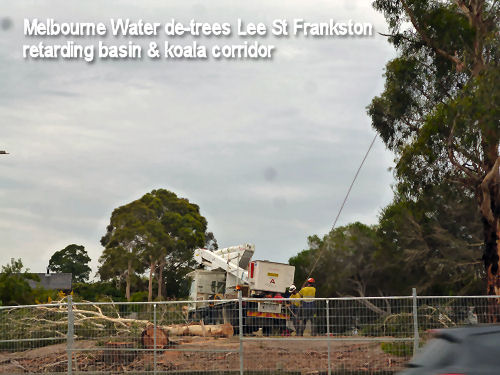
Then Melbourne water is now treating small local retardant basins as major dams, under the ANCOLD guidelines. Why are small retarding basins being treated as major dams? Because our 60% immigration fueled population growth has caused urban densification and the proliferation of hard surfaces. Although this was predicted by residents with foresight in many VCAT battles, these hard surfaces now carry the threat of major floods, so the small retarding basins that were adequate for many decades, now are deemed in need of reinforcement to bring them up to major dam status!
What has this got to do with trees and wildlife habitat and human amenity, you ask?
These new ANCOLD guidelines require the removal of all trees from ‘batters’ or dam banks. Since previous thinking caused the planting of trees because trees stabilise earth-forms, this ‘new’ thinking requires the removal of another huge quantity of mature trees, denuding much parkland throughout Victoria. Can you blame me if I suspect this is also to suit private developers and people who want land ‘released’ [from the commons and nature]?
The implications of these ANCOLD guidelines (which are now an Australian standard that is threatening green spaces all over the green bits surrounding this 70% hot desert and rangeland island) are staggering for the green wedges that follow Victoria’s rivers and creeks, their canopies cooling our environment through transpirational heat exchange, lowering water tables through the same transpiration, providing habitat for our wildlife and a green commons for our human spirits. Melbourne Water is in charge of more than 200 such basins. It pretends to follow guidelines to protect the displaced wildlife but in fact it does not have plans in place for their survival and reestablishment. It invites people to ‘revegetate’ what it has devastated, but our wildlife cannot wait for 25 yrs while trees grow to maturity, or 100 yrs plus until natural hollows occur. And the cheek of Melbourne Water to invite the people for whom its works have diminished their natural ammenity to replant such areas and not be paid! Insults added to injury. If you want to read more about this scandal, and its impact on wildlife, community and democracy, have a look at /node/5401 and https://awpc.org.au/awpc-to-melbourne-water-response-on-tree-removal-lee-st-retardant-basin/. Furthermore, there is a rumour that the Federal government is planning to make work like tree-planting mandatory for environmental organisations to qualify as tax-deductible. Slave labour for public works damage! And when every government leads with the plaintive cry of "Jobs!" This is where the labour is required.
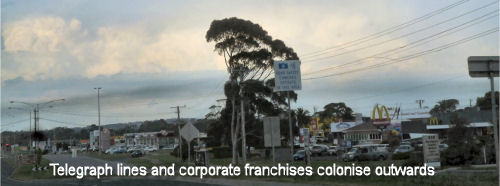
Still more ... Cull permits for gentlemen farmers
And it doesn’t stop there. Big money in densifying rural areas is impeding the passage of kangaroos to their feeding grounds, with the usual myth [See https://awpc.org.au/roo-scientists-admit-industry-stimulates-roo-population-growth-whilst-calling-roos-pests/ ] that there are ‘too many’ - a hollow farce familiar to the wildlife carers who must deal with the injuries that come from ‘gentlemen farmers’ taking potshots with permission from the ever generous and poorly overseen permissions to cull issued by DWELP: https://awpc.org.au/awpc-speak-out-against-the-culling-of-kangaroos-in-cape-schanck/.
And more ... Freeways and tollroads devastate our landscapes and wildlife
And then there are there is the devastation caused by freeways and tollways created to ‘solve’ the congestion problems created by overpopulation. Money given to Parks Victoria by Peninsula Link for predator proof fences around scarce bandicoot habitat has been diverted to another program far from the original area, consolidating the damage that wildlife campaigners thought they might have mitigated in this place.
And don't rely on Parks Victoria to help the situation ...
Of course the public think that Parks Victoria is looking after animals in the parks it manages for ‘healthy people’, but we cannot rely on Parks Victoria. See /node/2376 and /node/2377.
Australian Wildlife Protection Council
And the examples I give here are actually taking place at the mouth of the Mornington Peninsula Biosphere - scheduled for densification, of course. Shame!
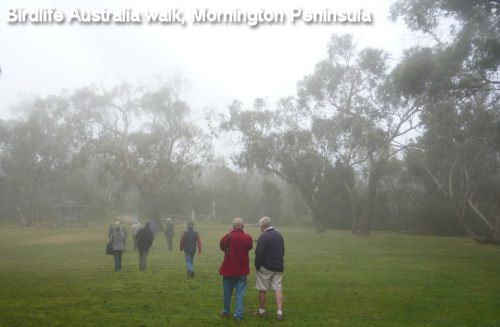
It is not the big-name conservation organisations but the hands on volunteers in organisations like AWPC (whose articles I have used as examples) that are doing the hard yards in this vicious losing battle against a delusional ideology fueled by speculative money that wants to increase human population despite our population being bigger by an order of magnitude than it has ever been for the bulk of its history. Does economics totally lack a sense of proportion or irony? The King Midas myth and the magic pudding pale against the science of modern economics which seems so similar to 17th century economics and official religion.
The notions put forward in the article I am commenting on simply stagger me in their unreal, coldly irrational model of the world we live in, biological human values, and what passes in The Conversation for research and analysis. Unfortunately these are the dominant models and values that are then acted on by governments and their contractors, in a great tragedy for this beautiful and fragile land that gives us all life.
Tragic chronicle of failure to support intervention in cow and calf neglect case in Charlton
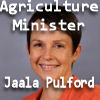
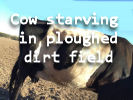 See five day correspondence seeking help for cow and calf inside this article. A cow has died because an animal lover could not get any help to save this cow from the so called "protectors "of our animals that have the privilege to enforce an act of parliament called the Prevention Of Cruelty to Animals Act in this state (Department of Agriculture and Water Resources Victoria) and a charitable organisation that relies on donations and bequests to survive. The cow and her calf were on a property at Calder Highway Charlton in a ploughed-over paddock completely void of any vegetation. No feed, no water. Pictures show the dam was bone dry! No apparent care. Minister Jaala Pulford's Department of Agriculture and Water Resources Victoria was repeatedly contacted, but there was no response at all. Answers are still being sought from Department of Agriculture and Water Resources Victoria, RSPCA and the state government as to why this animal was allowed to die and why it took 5 days for them to attend and why there is no prosecution pending and how their investigators make up their minds so quickly, apparently without reviewing evidence supplied by the courageous lass, Leesa, who tried to care for the animals and whose email correspondence forms the bulk of this article. A senior vet apparently told Leesa that they would not be prosecuting the owner due to not having enough evidence. Look at the pics taken by Leesa to decide for yourself. - Barrie R. Tapp, Senior Investigations for Animal Cruelty Hotline Australia: 0409144803 or free call 1800751770.
See five day correspondence seeking help for cow and calf inside this article. A cow has died because an animal lover could not get any help to save this cow from the so called "protectors "of our animals that have the privilege to enforce an act of parliament called the Prevention Of Cruelty to Animals Act in this state (Department of Agriculture and Water Resources Victoria) and a charitable organisation that relies on donations and bequests to survive. The cow and her calf were on a property at Calder Highway Charlton in a ploughed-over paddock completely void of any vegetation. No feed, no water. Pictures show the dam was bone dry! No apparent care. Minister Jaala Pulford's Department of Agriculture and Water Resources Victoria was repeatedly contacted, but there was no response at all. Answers are still being sought from Department of Agriculture and Water Resources Victoria, RSPCA and the state government as to why this animal was allowed to die and why it took 5 days for them to attend and why there is no prosecution pending and how their investigators make up their minds so quickly, apparently without reviewing evidence supplied by the courageous lass, Leesa, who tried to care for the animals and whose email correspondence forms the bulk of this article. A senior vet apparently told Leesa that they would not be prosecuting the owner due to not having enough evidence. Look at the pics taken by Leesa to decide for yourself. - Barrie R. Tapp, Senior Investigations for Animal Cruelty Hotline Australia: 0409144803 or free call 1800751770.
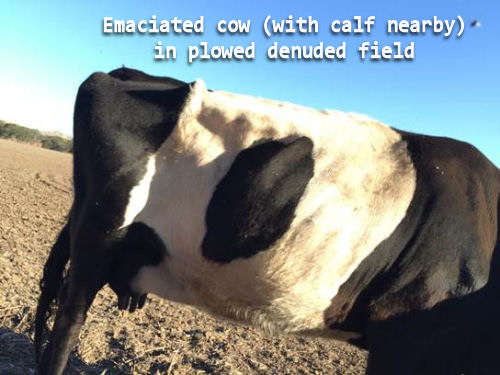 See below the email record of correspondence on this case by Leesa, who cared for an animal and stayed with it fed and watered it until it died after a struggle trying to get some help from the department that we depend on to help animals in distress the Department of Agriculture and Water Resources Victoria! Her calf is still there no feed/water only that Leesa is attending as much as she can. Will some body please help her? We wrote to the minister Jaala Pulford and the Premier and any one else that might listen and sent numerous emails to no avail until on Monday the Department of Agriculture and Water Resources Victoria attended, saw the cow dead and informed Leesa that there wont be any prosecution of the owner - "no evidence"!
See below the email record of correspondence on this case by Leesa, who cared for an animal and stayed with it fed and watered it until it died after a struggle trying to get some help from the department that we depend on to help animals in distress the Department of Agriculture and Water Resources Victoria! Her calf is still there no feed/water only that Leesa is attending as much as she can. Will some body please help her? We wrote to the minister Jaala Pulford and the Premier and any one else that might listen and sent numerous emails to no avail until on Monday the Department of Agriculture and Water Resources Victoria attended, saw the cow dead and informed Leesa that there wont be any prosecution of the owner - "no evidence"!
Correspondence Subject: Charlton Cow Neglect
Date: Mon, 19 Oct 2015 22:10:08 +1100
Subject: Charlton Cow Neglect
From: leesanne[...]
To: Horseman [...]
"Wednesday October 14th – Drove past the paddock in Charlton and noticed the Cow and her calf were close by the fence and I noticed her severely emaciated condition whilst driving and stopped to take photographs. After returning home I immediately went to the local council Buloke Shire in Wycheproof and alerted them to the situation and showed the photographs. I was told that the ranger would look into it.
I went back to the property and took a couple of buckets with water and a bale of hay. The cow drank all of what little water I provided. The paddock is ploughed and provides no food for the animals. At this point, I gave her a name Bell – and Bella her calf.
My reason for the name is that perhaps if she had a cow bell on, someone else may have noticed her. Only I did though.
Thursday 15th October – 37 degree day - I returned to the property with a larger bucket and provided more water for the Cow however she was far in the distance and probably would not notice it was there. I stayed at the paddock for 3 or so hours and noted there was little movement from the Cow. She stood for short periods walked a few meters at most and sat back down again. I entered the property and checked the dam and the water container – both dry and appeared to have been so for quite some time. So no food and no water.
Friday 16th October – I returned to the paddock to check on the Cow and calf and see if the container of water had been accessed. It hadn’t and the Cow was sitting down in the same area as the day before. I called the Buloke shire and asked if the Ranger had been out to check as I had not heard anything. I was informed that he emailed me. I checked the email whilst at the paddock and [...] the ranger told me told me to contact the RSPCA or DELWP as they are the appropriate authorities to deal with this “issue”.
Whilst at the paddock I informed the RSPCA of the issue and enclosed photos. I also contacted the DELWP and they told me they would look into it. Numerous times I had stated that there was no food and no water and this cow is in a critical condition.
RSPCA email me that night and state there is a job number 282469 – and the information has been forwarded on to the relevant inspector.
Saturday 17th October – RSPCA call me Saturday morning with more questions regarding the Cow again I state how critical it is and nothing has been done. RSPCA call me again – unfortunately I missed it and Sarah Johnson RSPCA inspector stated in the message that the relevant department of agriculture are aware of it and it’s taken care of.
On my way home from Volunteering at Edgar’s Mission I stop by the paddock again. 7:20pm the water still not touched. I noticed that the cow was down again very close to the same position the day before. I left my vehicle and entered the paddock and I ran to where she was. Dead. I fell in the dirt crying and apologising I tried so hard to save her. I called one of the staff members at Edgar’s Mission and asked what I should do. He called Pam Ahern [Edgar's Mission] for me as I was too upset to talk. Pam Ahern sent me a message to contact you (Barrie Tapp from Animal Cruelty Hotline Aust.) and seek assistance.
I relay the information to Barrie and he contacts the DELWP. Barrie calls back and advises me [a veterinarian] will be calling me back very shortly [...]. It’s now past 8pm the sun is setting and I am still sitting the dirt upset that all this could have been avoided. I take a closer look at the Cow and her head is lying in a pool of blood that has come out of her mouth and nose. This has been a cruel and painful death her struggle can be seen in the dirt. Her poor baby has stuck by her side trying to wake her up. I call Barrie back as I hadn’t been contacted. Barrie tells me to call the DELWP and speak to the gentleman. I call and leave a message with [the veterinarian] stating who I was and that I am expecting his call back urgently.
He calls me back and advises that the photos he has seen of the calf said that he will be fine until Monday and he will get somebody out there. I state that the mother is dead now after nothing has been done and there is no food and no water. He told me, haven’t you provided water. I told him yes, but the calf has not ever drank water before and would not know where the small bucket is in the 100+ acre property. I tell him it is urgent! He says he will get someone out there tomorrow and will contact me and let me know what is happening.
Sunday 18th October – Haven’t heard anything. That evening I do my 30 minute drive to the Paddock again to see the untouched water, the dead mother, the calf wandering aimlessly. I call [the veterinarian] and ask why he had not called me back. He proceeded to say that an inspector had been out and that everything was okay. (It’s not okay, the calf is still motherless, foodless and waterless) He then said something about the inspector moving the water closer to the calf. Then later said he left it where it was as the mother would have shown the calf where it was and didn’t want to move it. I told him the day before she never got to have any of the water and she would not know where it was! I’m repeating myself! He also said that they managed to get a hold of the owner who wants the calf still and will pick it up tomorrow – despite the fact that he has neglected them both.
Monday 19th October – 5:50pm I am by the paddock again. The calf is still there. I call [the veterinarian] again and state the situation all over again. Why has nothing been done!? No food no water! Mike says thanks for letting him know we will contact the owner again. If he does not do anything he will be charged. I said why will he not be charged anyway? The mother is dead! Mike says that there is no evidence of that. I cut him off and said excuse me? I have photographs, I have video footage, I have seen her, I can see her dead body right now! Mike tells me that no one else has seen it – relevant authorities – and that basically nothing will come of it.
I contact Barrie and advise him on whats going on and what Mike has told me and we contact the DELWP again and speak to a new inspector Cameron Bell. Cameron Bell said there isn’t anything he can do tonight, he will contact [the veterinarian] in the morning."
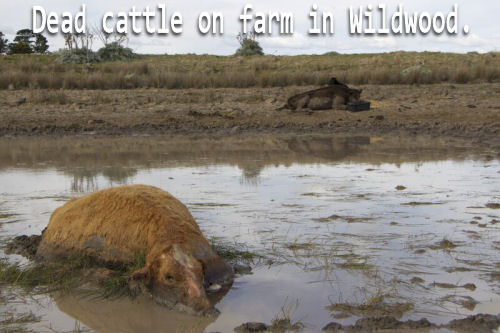
This is the second time in two months that a case of alleged neglect and dereliction of duty by a government department with a duty to protect them has been suffered by animals. Another case involved cattle at Wildwood, north of Melbourne where cattle drowned in dams and their calves were having to fend for themselves. The outcome of this case is still not known and Mr Tapp cannot find out due to "privacy laws". He says that numerous carcasses were found piled in a heap on the same property. He comments that animals do not benefit from these privacy laws! He calls for an independent animal welfare inspectorate NOW. He asks readers to please email their local member and get some action to help these animals and to press for prosecution. He adds that "This buck passing from RSPCA to DEPIJW has to stop as cruelty is cruelty." - Barrie Tapp.
Pets on science diet pebbles by Miss Julia
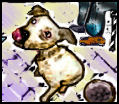 "My dog doesn’t eat meat! “ declared Ann. “Neither does my cat” declared Sarah in a satisfied tone.
"My dog doesn’t eat meat! “ declared Ann. “Neither does my cat” declared Sarah in a satisfied tone.
Well, isn’t that amazing? Two different pet animals who do not eat meat, both of species associated with carnivorous habits. I guess I would not worry about this if I only heard it twice, but it seems now that most of the pet cats and dogs I know eat pebble shaped bites of a mysterious substance or mixture which is purported to be perfectly balanced and to provide “everything they need” !
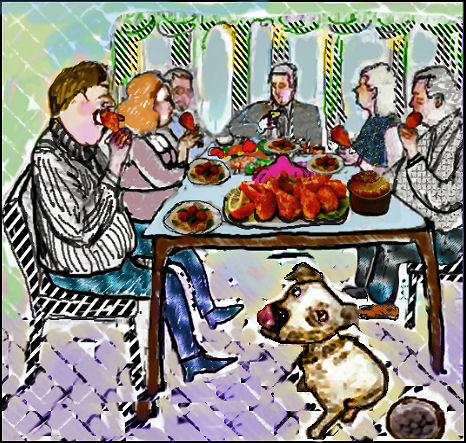 The trouble is that, from my observations, these hapless canines and felines don’t like this manufactured offering. The unfortunate mutt that I am caring for at the moment whilst his owner is on holiday is only allowed about 20 mustard coloured manufactured morsels for each of his two meals. He madly tried to get into a plastic bag in which I had disposed of a piece of kitchen paper which had absorbed a trace of meat juices whilst the pebbly plateful remained untouched. This little dog barely recognises this stuff as food. He only resorts to it after several hours and after all other avenues of nourishment have been unsuccessfully explored. He eats these granules totally without joy. Another delightful and much loved pooch of my acquaintance who is now about 8 years old has never had anything but “pebbles” pass thorough his black lips. This animal is so much loved that the couple who own him cannot go away together unless he can go with them, yet every night a dizzying array of delicacies adorns their dinner table whilst their doted on dog only gets the same diet food.
The trouble is that, from my observations, these hapless canines and felines don’t like this manufactured offering. The unfortunate mutt that I am caring for at the moment whilst his owner is on holiday is only allowed about 20 mustard coloured manufactured morsels for each of his two meals. He madly tried to get into a plastic bag in which I had disposed of a piece of kitchen paper which had absorbed a trace of meat juices whilst the pebbly plateful remained untouched. This little dog barely recognises this stuff as food. He only resorts to it after several hours and after all other avenues of nourishment have been unsuccessfully explored. He eats these granules totally without joy. Another delightful and much loved pooch of my acquaintance who is now about 8 years old has never had anything but “pebbles” pass thorough his black lips. This animal is so much loved that the couple who own him cannot go away together unless he can go with them, yet every night a dizzying array of delicacies adorns their dinner table whilst their doted on dog only gets the same diet food.
Why? you may ask do people comply with a veterinarian-ly authorised dictum that their pets eat a constant and unvaried regime of “science diet”? As we all know these foods do contain meaty substances but in low concentrations. If they didn’t, surely the pets would not get to their 2nd birthday?
With my current charge I have broken the strict rules I was given as I cannot put up with his being constantly hungry and unsatisfied. I am a most unsatisfactory dog sitter. Today I slipped a few chop tails complete with sizzling and crispened fat into the dog’s dish as well as some miniature sausages earlier. All of these disappeared down the hatch at lightning speed. The mustard coloured pebbles, eschewed, sit lifelessly in another white dish, untouched, unwanted.
What a dilemma I have ! I can return the dog in good health and well fed when my friend returns from holiday but she will see, the first time she walks him, that I have not adhered to the yellow ochre pebbles. I could go back to the pebbles the day before, I suppose, and the dog's owner will never know what dietary transgressions took place.
I did ask my friend why her adored pet was not allowed real meat, and a varied diet, and she told me that this prescribed diet for her two year old dog was on the advice of the vet, in whom she has complete faith. This is the same answer to this question that I have had from everyone I know with "pets on pebbles” .
Unconscious-able that our government fully supports live exports

According to the RSPCA, since ESCAS was introduced, Israel's live export market has been the subject of numerous complaints regarding the treatment of Australian animals. Apart from inhumane loading and handling, abattoirs in Israel continue to use barbaric inversion slaughter boxes which rotate cattle upside-down to have their throats cut without stunning.
Hidden cameras set up by Animals Australia investigators have captured harrowing vision of routine abuse inside one of Israel’s biggest abattoirs. Just like Bakar Tnuva, (exposed in 2012), the Deir Al Asad slaughterhouse passed audits and was given the ‘tick of approval’ by live exporters and the Australian Government.
This must be incredibly painful, and terrorizing for the animals, but now, footage from the Dabaah abattoir has revealed even more appalling treatment at the point of slaughter.
Australian cattle that have just been attacked in what's crudely called "slaughter" are staggering onto the kill-room floor with their throats gaping open, to be eventually hoisted while still conscious. Workers are seen twisting and breaking their tails to make it easier for them to attach the hoisting shackles.
This abattoir is deemed compliant with every single requirement of ESCAS by the exporter-appointed auditor. Australia is compliant to this torture by supplying the animals!
When Animals Australia investigator visited Vietnamese abattoirs last month, he witnessed what Australian cattle who commonly fall ‘outside the system’ are subjected to. It is the same fate suffered by local cattle as well as those imported from other countries when they are slaughtered in the ‘traditional method’: A frightened bull is marched onto a blood soaked kill floor. He is restrained tightly by a rope around his neck. A slaughterman stands before him wielding a sledgehammer!
In 2013, the first video evidence showing Australian cattle being hit with sledgehammers was provided to the Department of Agriculture by a concerned member of the public. But instead of halting live cattle exports at that time, the industry chose to rapidly expand the trade and increase market share in Vietnam.
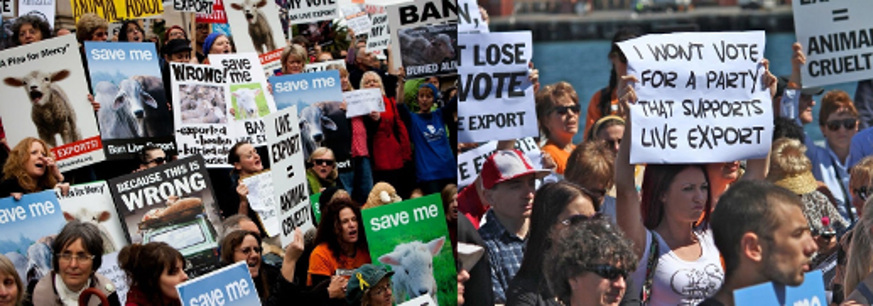
It's unconscious-able that our government fully supports this evil trade. We've had sledgehammer attacks, sheep buried alive, and every atrocity imaginable, but the live export trade continues.
While profits benefits producers, and Australia's economy, any industry built on such horrendous animal abuse and abandonment of ethnics is completely unacceptable, and must end.
PETITION: Ban live exports
banliveexport.com
Open letter to Canberra public objects to kangaroo cull
 Nobel laureate J.M. Coetzee is one of fifty well-known authors and scientists who have signed this open letter to the Canberra public protesting the mass killing of kangaroos which has been taking place annually for some time in Canberra. For those interested in the history of this annual slaughter, Candobetter.net has published at length on this subject here: http://candobetter.net/SaveTheKangaroo. It is wonderful that a number of influential people have now put their names on the line to defend kangaroos from slaughter and kangaroo science from ideology. Many more people are also against this absurd and cruel practice. [Candobetter.net Editor: Republished from http://www.beautifulwild.com/. Also available here: http://www.arcohab.org/#!letter/c1yzj. Also the subject of an article in the Canberra Times.]
Nobel laureate J.M. Coetzee is one of fifty well-known authors and scientists who have signed this open letter to the Canberra public protesting the mass killing of kangaroos which has been taking place annually for some time in Canberra. For those interested in the history of this annual slaughter, Candobetter.net has published at length on this subject here: http://candobetter.net/SaveTheKangaroo. It is wonderful that a number of influential people have now put their names on the line to defend kangaroos from slaughter and kangaroo science from ideology. Many more people are also against this absurd and cruel practice. [Candobetter.net Editor: Republished from http://www.beautifulwild.com/. Also available here: http://www.arcohab.org/#!letter/c1yzj. Also the subject of an article in the Canberra Times.]
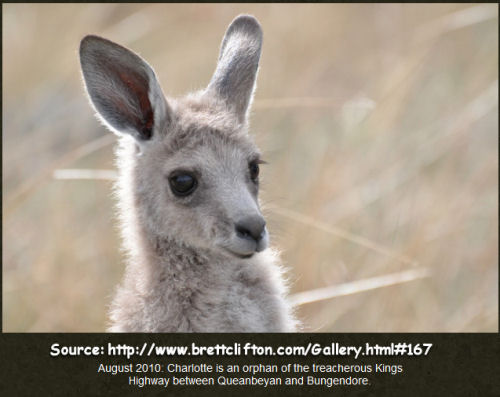 AN OPEN LETTER TO THE PUBLIC OF CANBERRA
AN OPEN LETTER TO THE PUBLIC OF CANBERRA
We the undersigned believe the need for a mass killing of kangaroos by the ACT Government is ill thought out and cannot be substantiated. The analysis in support of such a program fails the tests of good science, conservation, animal welfare, economy and humanity.
We understand that: no causal evidence of any rigorous kind has been provided that directly links kangaroo grazing on Canberra nature reserves with the demise of other small threatened species. No assessment of the subjective lives of native animals in Canberra’s nature reserves is provided as a clue to their survival. No commonly used non-lethal management tools have been advocated by those who believe in the negative impact of the current kangaroo population on the rest of the environment, despite considerable evidence over many years and in many places that they are effective.
The decision to proceed with the killing disregards the extreme brutality of the killing process. There has been no assessment of the impact of mass native animal killings on the local economy and society and our view is that these costs are substantial.
The scientifically substantiated appreciation of other animals’ cognitive, emotional and psychological capacities requires that we break the cycle of violence of conventional management methods. Abandoning such measures offers a unique opportunity to find innovative solutions which promote sustainability and reflect the desire of communities for peaceful coexistence with other creatures on the planet.
We therefore call for an immediate cessation of the mass killing of these native animals, and for a full and truly independent examination of the above-listed and other relevant matters by respected professionals.
Pam Ahern, Edgar's Mission Farm Sanctuary, Victoria
Dr Rosemary Austen, kangaroo rehabilitation and translocation expert, medical practitioner, ACT
Dr Jonathan Balcombe, biologist, author, Animal Studies Dept (Chair) Humane Society University, Washington D.C. (USA)
Marc Bekoff, Ecology and Evolutionary Biology, University of Colorado, Boulder (USA)
Dr Dror Ben-Ami, Co-founder and lead researcher, Centre of Compassionate Conservation, University of Technology Sydney.
Dr Jeffrey Borchers, ecologist, the Kerulos Center, USA
Dr Melissa Boyde, Australasian Animal Studies Association; Senior Research Fellow, Faculty of Law Humanities and the Arts, University of Wollongong
Gay Bradshaw, PhD (ecology), PhD (psychology), CEO The Kerulos Center (USA)
David Brooks, author, editor, Hon A/Prof, University of Sydney
J M Coetzee, writer
Claire Colebrook, Edwin Erle Sparks Professor of Literature, Pennsylvania State University (USA)
Dr Margo DeMello, PhD, Animals & Society Institute (USA)
Carolyn Drew, MAdEd, Executive Director of Regions, Institute for Critical Animal Studies
Lara Drew, Ph D candidate, Education, University of Canberra
Ray Drew, MA Communication Grad Cert Psychoanalytic Studies, Wildlife Photographer
Katrina Fox, journalist and author
Professor Steve Garlick, PhD, University of Technology, Sydney
Stephen Graham LLB, Virtual Lawyers and Mediators Pty Ltd.
Dr Jason Grossman, philosopher of science
Naomi Henry, Voiceless Council
Melanie Joy, PhD, Professor, University of Massachusetts, Boston; President, Beyond Carnism; Author
Professor Vrasidas Karalis, Modern Greek Studies, University of Sydney
John Kinsella, author, Professorial Research Fellow, UWA; Professor of Sustainability and Literature, Curtin University.
Lawyers for Animals
David Malouf, writer
Clare Mann, psychologist, author and Managing Director of Communicate31
Jeffrey Masson, Ph.D., Author
Alex Miller, writer
Raymond Mjadwesch, ecologist
Alison Moore, Ph.D., Faculty of Law, Humanities and the Arts, University of Wollongong
Nic Nassuet, singer/songwriter (USA)
Mark Pearson, member NSW Legislative Council
Teja Brooks Pribac, The Kerulos Center; PhD Candidate University of Sydney
Daniel Ramp, Ph.D., Director, Centre for Compassionate Conservation, University of Technology, Sydney
Tracy Ryan, author
Stephen Sewell, playwright
Lynda Stoner, Animal Liberation NSW
Bill Taylor Ph.D., retired CSIRO plant scientist
Maria Taylor Ph.D., science communication, author, newspaper publisher
Associate Professor Nik Taylor, School of Social and Policy Studies, Flinders University, South Australia
Marianne Thieme, Leader & Chair, Party for the Animals, The Netherlands
Dr Christine Townend, author, founder Animal Liberation, NSW, co-founder Animals Australia
Dr Richard Twine, Co-Director, Centre for Human-Animal Studies, Edge Hill University (UK)
Dinesh Joseph Wadiwel, Ph.D., Socio-Legal Studies and Human Rights, School of Social and Political Sciences, University of Sydney
Brenda Walker, writer, Winthrop Professor of English and Cultural Studies, University of Western Australia
Bren Weatherstone, M.Env Sci., teacher (ACT)
Elizabeth Webby, Professor Emerita, Australian Literature, University of Sydney
Dr Richard J. White, Senior Lecturer in Human Geography, Sheffield Hallam University (UK)
Professor Stuart White, Director, Institute for Sustainable Futures, University of Technology, Sydney
Phil Wollen, OAM Founder of Winsome Constance Kindness Trust
Gypsy Wulff, Teacher, Author, Publisher, Founder of Spirit Wings Humane Education Inc.
FACT SHEET PDF
Further action:
If you would like to help the campaign to stop the A.C.T. Government kill of kangaroos, please sign the Animals Australia petition: http://www.animalsaustralia.org/take_action/stop-kangaroo-slaughter-ACT
Petition to Shane Rattenbury, MLA, Minister for Territory and Municipal Services, A.C.T. : https://www.change.org/p/shane-rattenbury-end-the-cruel-slaughter-of-kangaroos-on-public-reserves
Link to The Alliance for Respectful Co-habitation: www.arcohab.org
Taking action! If you live in or near the Australian Capital Territory, and would like to help out in the field by helping to monitor the reserves, please email Carolyn Drew at [email protected]
NOTES
Candobetter.net: Thank you to Brett Clifton for his wonderful site with photographs of many kangaroos at http://www.brettclifton.com/Welcome.html from which I have sourced the photographs in this article.
Collapse, conspiracies, and three ideas for environmentalists to genuinely save the planet
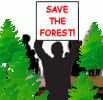 On Friday the 13th of February I attended the “Great Debate: To Collapse or Not to Collapse,” hosted by the Sustainable Living Festival at the Deakin Auditorium. The following Wednesday I attended a screening on the movie Cowspiracy, hosted by Animal Liberation Victoria, which explored the impact of industrial animal agriculture on the environment and the resistance from environmental groups to address the issue in a meaningful way.
On Friday the 13th of February I attended the “Great Debate: To Collapse or Not to Collapse,” hosted by the Sustainable Living Festival at the Deakin Auditorium. The following Wednesday I attended a screening on the movie Cowspiracy, hosted by Animal Liberation Victoria, which explored the impact of industrial animal agriculture on the environment and the resistance from environmental groups to address the issue in a meaningful way.
Both events painted a grim picture of the environment and society if we don’t make considerable changes, however as in most events that prescribe change, they did a good job of focusing on particular issues whilst ignoring others. I have reflected considerably over the past week, and after summarising the two events I will share three points that I feel get overlooked by the environmental and social change movements. I believe these points must be acknowledged if we are to sustain the planet for successive generations.
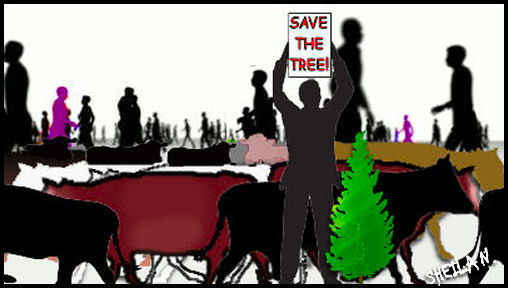
The Great Debate: To Collapse or not to Collapse
The Great Debate identified climate change as an immediate crisis and six key speakers argued as to whether change should happen as a result of ‘collapse’ (e.g. a breakdown of our current complex and fuel dependent society) into a simpler, more grassroots society, or whether to work within the existing paradigm to a society run on clean renewable energy. The audience had the opportunity to vote at the end of which option they most agreed with or to suggest an alternative solution. With Bendigo Bank and Future Super sponsoring the event and encouraging attendees to divest, it was clear that the clean energy option had more support, however if the MC was hoping for a clear cut debate from the speakers she may have left a little disappointed.
Speakers David Holmgren and Nicole Foss gave the clearest arguments promoting collapse as the best option. Holmgren, who has spearheaded the permaculture movements in Victoria and abroad, suggested that a move from the middle class from grid-dependency towards self-reliance based on permaculture principles will allow a change of culture permitting a smoother transition away from capitalist growth economies that greatly impact the planet. Nicole Foss (see www.theautomaticearth.com) argued that economic collapse is inevitable as we are currently living in a financial bubble. As the bubble bursts, it will not be possible to fund the investment costs required for a large scale transition to renewable energy sources. To the contrary, people will only become inspired to take grass roots action when there is resource and fiscal depletion, she argued.
Phillip Sutton (author of ‘Climate Code Red’); Jess More (Stop CSG Illawarra) and George Marshall (author) were more inclined to argue that economic or physical collapse isn’t necessary. Sutton stated that collapse would not take CO2 away from the atmosphere. Therefore we need green tech technology to reclaim these emissions. These three speakers seemed to believe that there is a failure to talk about climate change on across the political spectrum. So a bottom-up change needs to take place through a conversation with wider society. Hopefully this would eventuate in a critical mass motivated to change society away from fossil fuels and endless economic growth.
George Monbiot (Prominent UK climate change author) had reservations for both sides of the argument and counselled attendees to abstain from voting. He suggested on the one hand how the planet will struggle to sustain our societies with current growth even with a switch to renewable energies. Further, that it is impossible to grow on a finite planet, especially now that limits have been reached. On the other hand, he had reservations about the manner in which basic demands (such as health) might be met in a post-collapse society. He believed that history has shown that post-collapse societies are not a peaceful alternative as and that feudal societies or tribal pockets run by psychopaths tend to be the norm.
Once the votes were counted, it was found that a distinct majority of 123 voted for non-collapse, and 59 voted for a third option (whatever that might be).
Why collapse might be better
I was in the minority who voted for collapse (23 votes) because I believe that the planet and other species that still live in it have a better chance of recovery if we’re in less of a position to systematically exploit it.
I learnt much from this debate and all speakers raised clear and valid points. As I anticipated however, the largest two contributors to climate change and ecological destruction, human population and animal agriculture were never discussed. This is all too common in environmental discussions. Nicole Foss mentioned the ‘P’ (for population numbers) word in passing, and George Monbiot brought up limits to growth on a finite planet, however this was couched as an economic argument rather than in terms of human numbers.
Cowspiracy:
The frustration that I have with environmentalists ignoring animal agriculture as the primary cause of climate change was shared a few days later when I attended ‘Cowspiracy’, in which this was the main premise. Despite the conspiracy theory nature of the title, the movie was much better thought out than that. The documentary referred to the fact that UN reports had been repeatedly reporting animal agriculture as the leading cause of Greenhoouse Gases (GHG), with the World Institute equating this proportion to 51% of GHGs, or 32 000 million tonnes [1] This takes into account Methane (with a global warming power at least 23 times that of Co2) and land clearance. The Standard American Diet is much less efficient in terms of land area use compared to entirely or mostly plant based diet, with many studies suggesting the difference is quite dramatic [2], [3]. livestock agriculture now covers 45% of the earth’s surface [4]. Consider that transportation, the next highest emitter of GHG emission, contributes a much lesser proportion at 13%.
See http://www.cowspiracy.com/facts/ for many links to some of these sobering statistics.
The documentary makers were curious as to why many environmentalist groups, such as Greenpeace, were not campaigning on the issue or even providing this information. In investigating, their conclusions were that many environmental groups were either ignorant of the issue, wilfully or otherwise, or had deliberate motives for withholding this information.
Reasons included perceived possibility of alienation of membership and fund base, due to environmental group awareness that people tend to be disinclined to change their own behaviour. Relatedly, campaigns that have a clearer ‘us’ and ‘them’ delineation (such as fossil fuel emissions from corporate giants) are easier to pursue. There was also some leads to suggest that some of the larger environmental organisations may also receive funding from the animal agriculture lobby.
Many of us in the population movement would sympathise with the frustration that the documentary makers felt at this disjointedness of priority. However, I became frustrated at the film of my own accord, because as although the filmmakers acknowledged human population growth, they took the approach of trivalising it in comparison to animal growth. As the two are so intertwined, I was once again left feeling that many loose ends were not tied. This is a sentiment that is now all too familiar to me. Although I understand that everyone needs to pick their battles and focus on particular campaigns, failure to acknowledge important and fundamental issues undermines the whole environmental movement in the long run. I have listed 3 important issues that I believe must be acknowledged if we have any chance on either a clean emission free society OR a soft collapse:
(1) We need to stop eating industrialised animal products
This won’t be a popular suggestion for many due to the fact it suggests such a profound change to our diet and a fundamental change that is difficult for most of us. But inaction now means even more uncomfortable change down the track. Unless the UN changes its statistics more favourably anytime soon, the best single change we can do individually in regards to emission and biodiversity loss is to transition to a mainly plant-based diet.
If there is any benefit to living in a global society, it is that we have an access to a variety of plant foods that allow us to have a complete diet easily. The earth unfortunately cannot sustain 7 billion humans eating at the top of the food chain. The option to change, however, is possible within our current paradigm.
If this line of reasoning sounds logical, it is mainly the animal rights movement that is relaying the message to the wider public at present. It is easy to acknowledge that a fair proportion of people would be wary of the messages conveyed by animal rights activists due to suspicions that their morality may be skewing the validity of an environmental based argument. If a recognised environmental movement were to champion this cause, especially where animal agriculture was not the only focus, than I believe more people would be convinced.
I also acknowledge that most environmental organizations do amazing and tireless work within their areas of focus, and it is impossible to fight all battles at once.
Given the proportion of GHG attributable to animal agriculture, one might have hoped that more attention would be directed towards this industry by all the environmental groups out there. Currently however, there are precious few environmental organisations advocating for this, which probably comes down to a perceived unpopularity of the issue to the membership base, where a fundamental change to the way an individual member lives would need to be advocated for.
As mentioned before, ‘Us vs them’ debates, where the emphasis is on fossil fuel usage by corporate giants resonate better with most people. This may be because it externalises the issue and the individual campaigner is less compelled to change their own lifestyle choices. I completely empathise why environmental groups choose to take this path, but anyone who successfully campaigns against animal agriculture will be much more effective in the long run for the well-being of the planet, if this is the ultimate goal.
(2) Our population growth needs to slow down or not grow at all
Many readers of Can Do Better would rightly suggest that industrial agriculture is an unfortunate consequence of feeding a large world population and would not be a phenomenon if the world’s population were less than it is today. This is theoretically true but the current reality is actually unavoidable. If global populations were to double however, than the savings we’d made on GHG by switching to a plant-based diet would be nullified. Essentially we’d be back to square one again and need to look towards another seismic change in lifestyle.
The major problem is that the demographic transition, or the plateau in global human population that we were hedging our bets on just isn’t happening. We were predicting human population to reach 9 billion and level for around 20 years, and only most recently has this been upped to 11 billion, or a 40% increase from 7 billion. Currently charts show human population growth rate as an almost exponentially rising curve since the 1990s whilst the growth curve of all other vertebrate species on the planet (with the exception of ‘livestock’ of course) going inversely the other direction by almost the same amount.
I personally believe that human population will continue to grow at this rate until we (a) do something decisiveabout it or (b) we overshoot and our environmental rug is swept from under us. Of course, we are at this stage heading for option b.
Population numbers is a difficult subject for many of those people fighting to save the environment. This is probably because most identify with the left side of the political system. They thus struggle to differentiate population stabilization from reproductive coercion of the majority world (on an international scale) and protectionism or xenophobia on the national scale.
There is also a persistent belief that the problem is one of per capita footprint (particularly in the West) rather the total number of footprints. Most serious research has suggested that both need to come down, with population, unfortunately, being the most powerful variable.
Canadian environmentalist Tim Murray suggests that: ‘One new citizen via British maternity ward or airport wipes out 80 lifetimes of responsible recycling’ and ‘The energy produced by a 900 machine wind farm in BC will be erased by the energy demands of just 22 days of population growth’. This certainly paints a dour picture of the effectiveness of a clean economy with today’s rapid population growth.
Another example is that found from the Union for the Conservation of Nature, whose study across the globe in 2004 found that human population density predicted for 88% of biodiversity loss, regardless of nation wealth or per capita consumption.
This latter finding complements my own anecdotal experience volunteering in Western Kenya where the Karkemega forest was being decimated literally before my eyes from a hilltop viewpoint to meet the survival needs of local people, living on a sustenance level on less than $40 per month, whose population numbers had been disturbed and boosted by the political and religious landscape. This suggests that a population living in a lower consumption, non-global or post-collapse society would cause a significant reduction in environmental impact, but as Phillip Sutton and George Monbiot suggested at the Great Debate, environmental destruction just becomes more localized in such societies and more dispersed in industrialised ones. Note that traditional societies, human and of other species, have lived for many generations in local ecologies at numbers that did not overwhelm their environment. We can deduce this from the fact that they obviously co-existed with a full complement of species in Africa, India, America and Australia before colonization. [5]
The good news is that population growth can be a relatively straightforward thing to manage, if the political and social will is there. The United Nations Family Planning association has found that high levels of education and access to NON COERCIVE family planning services result is lower birth rates AND lower infant mortality – essentially when women are empowered and enfranchised away from patriarchal political and religious institutions. This may be a relief to those on the left haunted by China’s one child policy and population control in the majority world as manifestation of Western imperialism. Targeted grassroots foreign aid is the key.
Population is therefore an international concern (total carbon output) and a national and community concern (effect on local eco-systems) with varying implications according to carrying capacity depending on location.
Australia has reached its 23 million carrying capacity [6] according to the Australian Academy for Science calculations in 1994. We are now expected to double our population in 35 years, which means to halve our national carbon output, each individual will need to consume at one quarter of what they consume now. Ironically, in the long run, human psychology would probably predict that most Australians would opt for less people than the dramatic cultural shift that would result in a short-term reduction in the very way they live.
This is, of course, antithetical to the open border ideology to many in the left. I would love to share this ideology, but one must take into account the carrying capacity of Australia in addition to the population growth rate of the world’s poor which, at last estimate, was growing at the rate of 80 million per year. Even if Australia had completely permeable borders, it could never accommodate the total annual population of the world’s poor (at almost 4 times Australia’s current carrying capacity per year).
Unless the ultimate aim is complete diffusion of the problem without addressing the root cause (which benefits no-one in the long term) than an international movement to address population and reduce poverty is the only real solution.
Totally open borders, without addressing the root issue, also don’t address the well-being of all other species and the first custodians of the continent. It may also be argued that unless aboriginal Australians have final say in our immigration policies, that this can be interpreted as further unsolicited colonization.
As it stands most of Australia’s population growth rate (388 000 per annum, or at 1.7% per annum, the highest in the OECD) derives from the ‘skilled’ or employment-related immigration channels (55%) followed by natural birth rate (40%) with humanitarian intake a distant third at 5%.
The job market has been slowing down, and it is evident that the continued push for skilled immigration is social engineering by the right of the political spectrum to raise GDP by increasing the customer base via the housing and asset markets.
This push for high housing prices and low wages is at the expense of the working and living prospects of people with disabilities, the young, the old, the first inhabitants and even our asylum seekers.
This stark local reality puts environmentalists and the left at a seeming crossroads: open borders vs diminished social rights, vested interests and worse conditions for asylum seekers.
Whilst environmentalists and the left remain silent on the subject, or continue to confuse all debate on population with refugees, ironically big business benefits at the expense of most of the social rights that the left are campaigning for in addition to the environmental goals which are diluted by impacts of rapid population growth.
If the left are concerned by Australia’s population growth and the political ideologies that fuel the wrong kind of growth, the good news is that any concerted campaign that succeeds in toppling the property developers, financial institutions and media moguls from power would mitigate the pressure on politicians to promote socially engineered growth without ever having to mention the dreaded ‘p’ word. Currently the cause is championed by single issue advocacy group such as Sustainable Population Australia and a major hurdle for such groups is in enrolling the wider public, many of whom are skeptical that such groups are using environmental green wash to promote a culturally protectionist agenda. Whilst this assumption is false in the most part, multi-campaign environmental groups who also campaign for population sustainability would probably present the message easier, as their true agendas are more trusted by the wider community.
A final consideration would address our national birth rate. Whilst it is already slightly under ‘replacement level’ (1.9%) further cultural change would allow for a more generous humanitarian intake without affecting the population growth rate.
A cultural change would be possible where people did not feel that raising children was the societal norm and that having less or no children was considered an equally valid life choice from the perspective of mainstream society. A community focused upbringing, where a wider network of trusted adults assisted in the raising of fewer children, could be a better alternative to the nuclear family arrangement that is the current norm [7]. Furthermore, the education system could assist, where students could be facilitated in opening considering the many positives in raising a family, alongside the many costs, including financial pressures, changes to lifestyle, and the environmental impact of additional people on the planet. If we are considering that enormous change will happen in most of our lifetimes, including the possibility of economic and environmental collapse, this is something that people will need to carefully consider before deciding on having children.
Summary: we are not going to save our society from collapse if we are catering for a population heading towards a long term goal of infinity people, even with all the green tech in the world.
3. We have to keep our Ego under check
This last point comes more from my own philosophical outlook than through factual research that has resulted in my views on animal agriculture and population. However I do strongly believe that human ego has been at the core of all our problems and issues throughout history and fundamental to our ability to see through transition, whether through a clean capitalist economy or a soft collapse.
If we approach our problems from a place of empathy and compassion for each other and other species on the planet, we are in a better position to accept the facts of our predicament and make the necessary changes, regardless of how difficult the changes may appear to us personally. We’d also be able to work proactively with others and accept different opinions and factual evidence even if it initially conflicts with our own pre-existing beliefs.
I also believe there is some reason for optimism when it comes to addressing ego in what appear to be strong recent western trends to pursuing Taoism, Bhuddhism, mindfulness, and other spirituality which aim to mitigate ego and reconnect the individual to the planet. Not that this pursuit is reserved for spiritualists at the expense of atheists; most modern science, whether it be iquantum physics or biological science, is shifting from a Spencerian (false-Darwinistic) model of competition and reductionism towards one of mutual interdependence, symbiosis and balance.
If we come from a place of ego, we are ultimately coming from a place of insecurity and fear and tend to seek validation of ourselves and our beliefs at the expense of others. It makes us dogmatic and stuck in our beliefs, fearful of letting go and embracing change and the unknown.
These rigid characteristics are associated with big business, seeking short term profits at the expense of a future planet. The challenges for the environmental movement are to engage the wider public, of whom many are culturally conditioned, stuck in their ways and brittle in shifting their schemas.
Yet it would be delusional for those of us active in social change not to see the finger when it points back at ourselves.
Amazing though the work may be that we all do in our respective fields, if we are not addressing fundamental questions required to save ourselves, due to ego and fear, our efforts in other areas to save our planet can only be thwarted.
Ego is an issue everywhere, even in the animal rights and population movements. The animal rights and vegan movements are plagued by internal debate over many issues that can get personal, where this energy would be better diverted towards the animal agriculture industry. Some involved in population sustainability may be motivated to do so from a fear of losing their culture and lifestyle, however we all need to embrace that culture is a constantly changing phenomena, on those who currently live in Australia must also acknowledge that massive cultural shifts that we imposed and continue to impose on Australia’s original custodians. It was interesting at the Great Debate where there was much discussion from many of the speakers of the ongoing issues of promoting a dialogue to the wider public that is empathetic to their current beliefs and life circumstance.
Ego is most certainly an issue for myself. It was frustration which motivated me towards writing this article, itself a manifestation of ego, which means the finished article may be affected by judgment and fixed thinking. I still have a long way to go before I am a paragon of environmental sustainability - although I think I’ve addressed the two ‘biggies’ in regards my diet and my choice not to reproduce, I’m still sure that if everyone lived my carbon footprint that the earth would have been underwater decade ago, and there is still much, much more I can be personally doing. My aim is an ambitious one, to tread lightly on the planet and be as free from hypocrisy as I can. I would invite those inspired to join me in weaving all pieces of the puzzle together, and for those unconvinced, I would invite constructive debate on the thoughts I have raised, so long as it invites further constructive discussion towards a common goal of saving the planet.
Concluding Observations:
In order to authentically save the planet and ourselves, either through green tech, zero growth or through soft collapse, we need a holistic view of change, of which elements such as fossil fuels are more of an accepted given whereas animal agriculture, population, and ego are not given the platform I believe they deserve. These are very difficult issues to address, and history has not given much confidence in our capacity to live rationally and harmoniously with ourselves and our environment, but they are necessary to avoid a hard collapse, as predicted by Nicole Foss and George Monbiot at the Great Debate. If we are unsuccessful, that is perfectly fine in the longer term for the future of the planet itself, as I’m cautiously optimistic it will repair itself in an event where we are no more. It would just be a dreadful pity for the human race if we didn’t face facts and worked together to be authentic about giving it a good shot.
It is ultimately those issues that we find most difficult to confront that are the most essential issues for us to open up to.
Michael Bayliss is Vice-President of Victoria First, an NGO decicated towards better stewardship of Victoria through highlighting population concerns to the wider community. He is a former committee member of Sustainable Population Australia (VicTas Branch) and member of the Sustainable Population Party. He is also actively involved in many animal rights campaigns such as Coalition Against Duck Shooting and grass roots post-growth movements such as Doing it Ourselves.
NOTES
[1] Reference: “Livestock and Climate Change” World Watch Magazine, 2009. http://www.worldwatch.org/node/6294.
[2] Reference: Robbins, John. Diet for a New America,StillPoint Publishing, 1987, p. 352
[3] Reference: “Sustainability of meat-based and plant-based diets and the environment.” The American Journal of Clinical Nutrition, 2003, vol.78 no.3, 6605- 6635. http://ajcn.nutrition.org/content/78/3/660S.full
[4] Reference: “Livestock and Climate Change.” International Livestock Research Institute, Issue Brief, 2011. (https://cgspace.cgiar.org/bitstream/handle/10568/10601/IssueBrief3.pdf
[5] Reference: Sheila Newman, Demography, Territory, Law: The Rules of animal and human populations, Countershock Press, 2013.
[6] In 1994, Australian Academy of Sciences held the Symposium, "Population 2040: Australia's choice". They issued a joint statement http://www.sciencearchive.org.au/events/sats/sats1994/Population2040-section8.pdf Canberra : The Academy, 1995
Sheila Newman tells me that Jonathan Stone and others publicly stated that Australia’s population at the time of the event, which was 17 million, was probably already at carrying capacity. According to her memory, Dr Stone prevailed on those present to suggest they needed to appear generous to refugees and therefore should allow some leeway for immigration which, he felt, would take Australia to 23 million.
[7] In other species and in many traditional human communities, including Australia between the two wars, there is a long tradition of extended families helping one breeding couple. This is known to anthropologists as ‘cooperative breeding’. (See http://candobetter.net/taxonomy/term/6927) Aunts and uncles not directly involved in reproduction are able to engage actively with their local communities and wider politics. Status, position and identity need not depend on reproduction.
R.I.P. Elms - The second jumps racing death this week and the fourth this season.

Elms is the third horse to be put down after a jumps race this season. After a successful start to the season two horses have lost their life in the past week.
It is with regret that Racing Victoria confirms that Elms had to be 'humanely euthanized' after suffering a severe fracture of the right fore cannon while racing on the flat during the early stages of Race 2, the BM120 Hurdle at Casterton. This was an 'unfortunate incident' and RV would like to extend its sympathies to trainer Luke Oliver and the owners of Elms at this sad time.

None of the excuses put forward by the jumps racing industry for the continuation of this cruel 'sport' are acceptable -- and claims that horses will be shot, or go to the knackery has only given the community greater insight into how ruthless and uncaring the jumps racing fraternity are.
Why allow the "sport”"to continue at such high price?
There was another tragic death of a horse at Sportingbet Park Sandown when three horses fell in the steeplechase, including Show Dancer, who was also euthanized down, and the event also being called off.
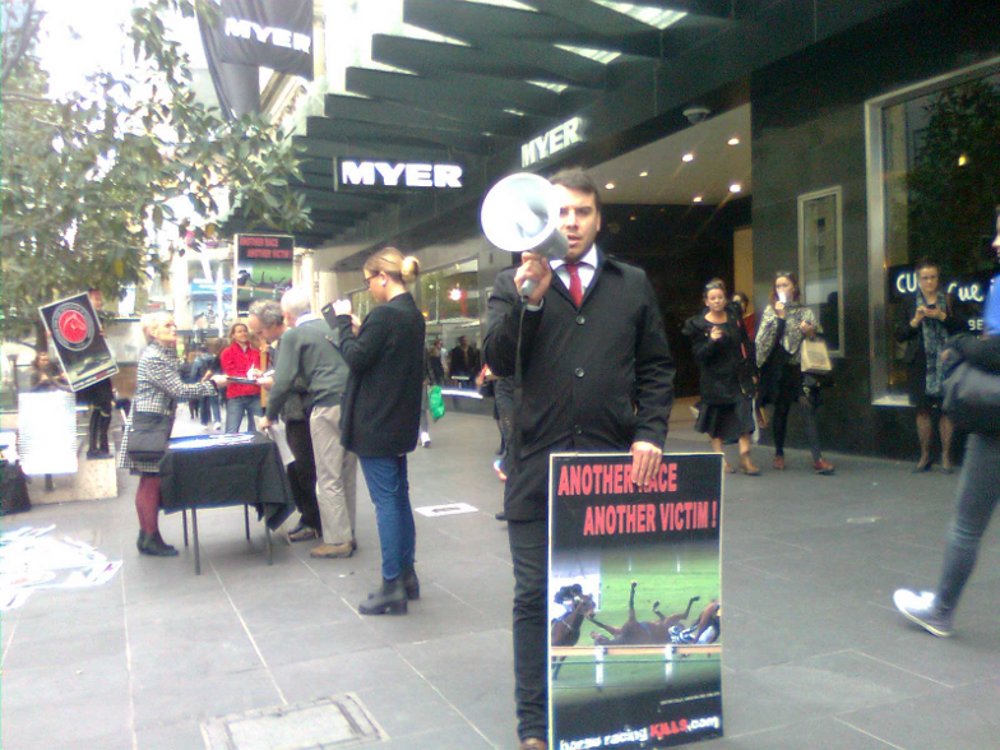
Show Dancers' legs slipped as he prepared himself for a hurdle, and he was fatally thrown through the fence, twisting and turning in the process. The 3400m steeplechase at Sandown on Tuesday proved to be a chaotic one, and ended in another horse being euthanised! While the jockey was cleared, the horse was doomed!
This tragic race was abandoned after three horses fell. If this race was called off due to "safety" concerns, then it's time the whole industry was called off.
While the racing industry claims that steeplechase safety has "improved" by 60% in the last four seasons with regards to fatalities, the very nature of the "sport" means it is inherently dangerous.
The speed, the heights, the clogged turf, the congestion, and the take-offs are all critical factors in making a safe finish, and that means decisions must be made under great stress for horses, and riders.
The very nature of jumps racing means that it can never by "safe". It's rare that horses die in flat races, so why should deaths be tolerable, and acceptable, when it comes to jumps racing?
The main players, the horses, are treated as throw-away items, as disposables in the pursuit of profits.
This barbaric "sport" no longer exists in any other states except for Victoria and South Australia. Jumps racing finished in Queensland more than 100 years ago. It stopped in WA in 1941 and in NSW in 1997. Tasmania ended it in 2007.
This "sport" should be trashed into history, along with other archaic activities such as recreational duck hunting, the mass slaughter of wildlife, 1080 poisonings, puppy factories, factory farming, and any forced use of animals in entertainment.
At least there is a light at the end of this dark, cruel tunnel for jumps racing horses in Australia! Victoria will soon be the only state in Australia where horse jumps racing is legal, according to the former head of the South Australian Jockey Club, Steve Ploubidis.
"I think that jumps racing in South Australia, the days are numbered," Mr Ploubidis told the ABC's 7.30 program.
Overpopulation and industrial farming - city dweller tells of battery chicken factory night raid
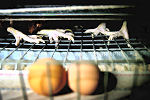
Rendezvous chicken concentration camp
A friend of mine recently invited me to ‘visit’ a factory farm to further my first hand education into the conditions of Australian animals in Victorian factory farms. She has been breaking into intensive animal farms for years, to observe the conditions of these places and to tip off animal rights groups and the relevant authorities when substantial codes of duties have been breached. She wishes to remain anonymous as any public profile may compromise her ability to slip into factory farms incognito. She predicted the experience, whilst unpleasant, would be at least educational and cathartic and that seeing the conditions of these places would catalyse further commitment towards animal liberation.
Why animal activists do not leave it up to the authorities
My friend informed me that she comes across breaches to duty regularly and will anonymously tip off to the relevant authorities as matter of course. The authorities, naturally, rarely act due to lack of will or lack of power, and as expected will tend to act mainly where there are human health and safety issues. Given the inactivity from the forces that should be regulating, she will often take it on herself to rescue the most sick or injured animals. Rescued animals will be nursed back to health at her home before being adopted to loving homes. Although solo rescue efforts will never be recognised by the farmer or their profit margins, (the battery hen farm we visited, for example, houses 30 000 chickens) she can an at least provide a better life for a few individuals who are suffering from neglect and abuse by their ‘owners’ and ignored by the eyes of the law.
Choosing between an egg or a pig farm
On arrival at my friend’s house she provided me the option of visiting a factory pig farm or a cage egg farm. Both options would involve leaving Melbourne around 10pm - the hen farm was closer than the piggery so we would be returning home at around 3am instead of 6am. As her home was already full of rescued animals and I couldn’t house any myself, I felt it would be easier on her if we brought back rescued chickens. Furthermore, I wasn’t sure that I was emotionally prepared to witness animals as emotionally complex as pigs in such dire circumstances (she told me that you can hear the distressed sounds of pigs up to 1km away from their incarceration and often they sound human). From my perhaps spurious logic, chickens offered a further degree of separation that would make witnessing their plight marginally less gut wrenching.
Covert approach
So off we drove into the night towards an egg farm dressed in black with binoculars (I felt like a spy on a sabotage mission, and in some respects we were). We discussed how we were going to break in; she had visited the farm before and the most direct method was to sneak past the home at the front of the property. However when we arrived by midnight, the lights in the house were still on, precluding direct access to the sheds without being noticed. After waiting on the road for half an hour the lights were still on full force so we decided to take a long cut via the adjacent cow paddock. This required weaving through barbed and electric wire and squeezing through gaps in the fencing, feeling like Harry Houdini on boot camp. As there was a full moon, we had to crawl several hundred metres in the trees and shadows to avoid being sighted by the household or by a worker having a smoko outside the employee sleep quarters. If all that wasn’t tense enough, my co-conspirator has a phobia for cows and was bracing herself for an encounter on the paddock (the irony of an animal liberator being afraid of cows was not lost on either of us). Thankfully the cows proved elusive that night.
Mechanised farming
We could hear the sheds well before we finally saw them in the (suitably) eerie grey moonlight. There was a persistent motorised humming sound derived from the enormous fans at one end of each shed that serve to maintain a modicum of air flow and temperature control. As the sheds themselves appeared fairly innocuous buildings typically found on industrial estates, the low hum was the first indicator of more sinister things at work inside.
The doors to the first shed were not locked but were stiff and would not move until they gave a creaking protest after a shove, ending in a reverberating bang. We stood still or a brief moment in case our cumbersome act had caught attention, but we then realised the fan had completely drowned out the sounds.
The living inside the machine
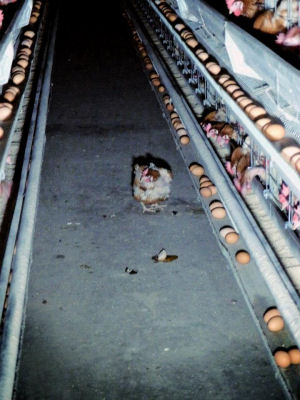
It was completely dark inside, and one almost felt alone aside from the hum. However, the nostrils were soon assaulted by that heavy earthy, nitrogenous smell so particular to chicken faeces. Switching on our torches, they shined on a floor of grim, unforgiving concrete mixed with dust, stray feathers and excrement. Then the torches were turned to the centre of the room, revealing numerous concrete partitions running 15 feet from floor to ceiling, like giant cupboards, with narrow pathways running between them.
We walked to the nearest walkway in complete darkness save for the thin slice of torchlight providing a small window in which to navigate ourselves. Once in the walkways we shone the torches to a wall. Almost immediately we were affronted by the visage of five sleeping chickens in a wire cage not much larger than an A3 sheet of paper. The chickens were back to back, side to side, with one almost lying on top of the others as there just didn’t seem to be enough room for all feet to make contact with the wire mesh floor.
It was an image that nearly takes the breath away and just as I remembered to start breathing again a couple of chickens stirred in the light and began quietly cooing. Their vocals whilst soft conveyed to me that they felt every bit as uncomfortable and distressed as they appeared. It was very tempting at that point to open the front chute and take all 5 chickens home with us right then, however we couldn’t practically leave with more than four and this cage certainly was not the only one in the building. To the side, underneath, and above all the way to the roof where the torchlight couldn’t reach, were cage after cage of crammed inmates that stirred as the light passed by them and added to the choir of quiet distress. Underneath each cage was a platform where the eggs collected, many which were partially covered by the excrement from the cage above or by dust from the facility at large, needing a solid clean before looking palatable for the supermarket. These eggs were the source of income and greed that allowed a cheap animal product to be readily available at a supermarket shelf 24/7 by means of exploitation of a vast number of units of production (that just happen to be self aware, sentient beings).
Disorienting scale
The knowledge that we were surrounded by up to 15 000 chickens in that shed but could only see clearly 2 or 3 cages at a time by torchlight gave a warped, disorientating sense of scale, and a sense of being watched in the dark. Shrouding the protagonists in darkness and the unknown is a technique used by rote in horror movies, but unlike fiction, this genuinely felt like walking into the jaws of hell, as depicted by an industrial dystopia where modernism and functionalism have reached their extreme conclusion.
Lifers' inner circle of hell
It would be hard to envision that things got worse from hereon, however this was the shed where the younger chickens had just started laying and had therefore had not being incarcerated for long. The second shed was far worse. Older chickens, nearing the end of their laying cycle moved here, and one could tell by the amount of built up excrement on their bodies in addition to a noticeable lack of feathers for many. I asked my friend whether this was due to being attacked by other chickens or through lack of nutrition and stress. She informed me that the most frequent reason for this is that chickens were plucking THEMSELVES because they had gone mad. In one cage we discovered a recently dead chicken that appeared as a puffy, amorphous lump with feathers; the poor hen had succumbed to an inflammation disease and the other living chickens were still stuck in the cage with her.
Weeks old corpses of chickens left on floor
On walking down the passageways in shed 2, one always needed to be looking down at the floor to avoid stepping on any carcasses. Sometimes a hen may have separated from her cage for a variety of reasons and ended up on the floor. If the chicken is older and approaching the end of her egg laying days she is considered surplus and a waste of effort and opportunity cost to place back in the cage. Such birds are instead left on the floor to die from dehydration, or are stepped and stamped on to break their windpipes and bones to hasten the process. I kid you not that some of the corpses on the passageways must have been weeks old that was both distressing and disgusting.
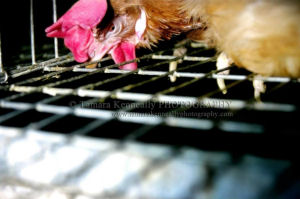
In the end we rescued four hens; three were alive on the floor and would have succumbed to dehydration had we not picked them up; we also rescued from a cage a hen with almost no feathers left on her. All birds gave a small protest when first handled but soon settled. Two were placed in a sack bag and the other two under our coats (when placed in a dark environment, bird species such as ducks and chickens will pacify and sleep almost instantaneously). Many of the birds now had stirred as we could not rescue any more there was no point in staying for any longer so we walked away to a chorus of a distressed, cooing choir.
Death by neglect in the cages far above keepers' heads
We noted that some of the sounds were sourced from cages far above us; these birds do not get the human interaction, however brief and apathetic it may be, and often get left behind and forgotten during times of ‘product rotation’ – death by neglect is almost inevitable.
Rescuing some of the worst-off survivors
The return journey to the car was made less graceful for having our hands full of chickens. The Houdini feats to get through the gates and fences the first time around had just increased by several levels of challenge. Adamant not to hurt any chickens in any way, we ourselves ended up with quite a few scratches and bruises ourselves (after gently placing the sleeping chickens through the border fence of the property, we made our last and final jump over the electric wire only to land straight in a blackberry bush). Any resulting suffering to us was however nothing compared to how these four brave soldiers had endured their whole lives. Noting that it was now impossible to remain quiet and inconspicuous, we were relieved that the lights on the house had gone off (quite how they sleep soundly at night though is anyone’s guess).
The empowerment of political engagement and humane action
The drive back was a feeling of mixed emotions for me. Exhausted, enervated and teary, I also felt catharsis and an odd sense of thrill at my incident- free go at civil disobedience. I felt empowered by having saved the lives of four individuals. And I have heard they are all at my friend’s house happy and well, in seventh heaven, enjoying sunshine, grass on their feet and room to spread their wings, all rights previously denied. I also felt powerless and small by my inability to save the lives of the other 30 000 chickens, and of course that is in just one egg laying factory farm amongst countless others. There were many questions running laps through my head as we drove off back to Melbourne again, many questions I haven’t found answers for and perhaps never will. I will try to provide a summary of my thoughts through the context of my twin passions of animals rights and human population sustainability
Observations and conclusions
Animal welfare standards
1) My own first hand experience of factory farming more or less correlates with the horror stories one often hears about. Perhaps there weren’t as many broken wings and legs as I was expecting, however the lack of space, the lack of feathers and the complete disregard for the chickens that ended on the shed floor simply beggars belief. Australia probably does have a slightly higher standard of animal welfare compared to some other parts of the world, but this does not mean that it is a HIGH standard by any means nor that we should sit back on our laurels when one is simply comparing between degrees of abhorrent treatment to sentient beings.
Cruelty a feature of industrial scale exploitation
2) Animal exploitation to this degree and scale of abuse and cynicism just to provide people the convenience of an animal product 24/7 at minimal cost makes me question our collective humanity as a species. I am not morally against eating meat fundamentally as to do so would be condemn all societies throughout human history who hunted meat from the natural world, which is a huge call to make. However by treating animals as large scale units of production and depriving them of any quality of life or happiness merely to satisfy an eating preference that we don’t require on a daily basis, I can only reflect on this as fundamentally wrong.
human overpopulation drives industrial-scale farming cruelty
3) In addition to capitalism and industrialisation, one of the contributory factors to factory farming is growing human population. In order to meet the wants of daily animal product consumption of a swelling population, there simply isn’t enough space to put all these animals in land that’s already been cleared of wildlife and used for other human purposes such as agriculture and suburbia. The result is to keep animals in as small an area as possible in artificial environments. As the population grows, free range farming will become increasingly impractical as there won’t be the space. Whilst a growing population destroys other animals through just about any food choice (just look at palm oil), it strikes me as a double whammy to clear a habitat and all the animals that live there only to then fill the space with countless livestock animals who endure suffering for our gain.
Raise awareness that overpopulating Australia decreases our moral choices
4) If there is an answer to any of the above, it would come down to a combination of understanding where your food comes from, eating ethically under the current circumstances (in my case avoiding all animals products) and do anything that one can to raise awareness of the implications of human population and to mitigate further population growth.
Did I enjoy my first factory farm visit at any level? Definitely not. Would I do all of this again?
In a heartbeat.
No place on earth for Marius - Execution of healthy young giraffe in Copenhagen Zoo 2014
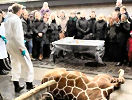 The news that the Copenhagen Zoo has carried out the execution of the resident young male giraffe, and cut his body up in front of onlookers, feeding him to the resident lions also in front of a young audience is macabre, insensitive and devoid of judgment and empathy...
The news that the Copenhagen Zoo has carried out the execution of the resident young male giraffe, and cut his body up in front of onlookers, feeding him to the resident lions also in front of a young audience is macabre, insensitive and devoid of judgment and empathy...
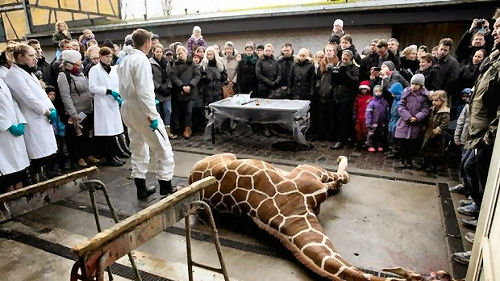 We all know that lions eat meat and that in the wild they hunt and eat giraffes. In captivity, lions must be fed meat but it is a very far cry from feeding a captive animal “meat’ to feeding it the identifiable body parts of a named personality in the zoo , one who has died at the hands of the zoo authorizes for no crime whatsoever but for the very dubious reason that it’s genes were too like those of the other giraffes in the zoo.
We all know that lions eat meat and that in the wild they hunt and eat giraffes. In captivity, lions must be fed meat but it is a very far cry from feeding a captive animal “meat’ to feeding it the identifiable body parts of a named personality in the zoo , one who has died at the hands of the zoo authorizes for no crime whatsoever but for the very dubious reason that it’s genes were too like those of the other giraffes in the zoo.
We are supposed to think that this is OK! It is not OK ! Apart from being a crime against the animal who was in the care of the Copenhagen Zoo, to deliberately show the feeding of Marius to the lions to children is try to desensitize them to what was really a ruthless killing and amounts to a sort of pornography.
We all need to come to terms with our own omnivore /carnivore natures in the industrialized urban society many of us live in, divorced from nature but to commit this act, to show it to children and to expect them to understand is for want of a better word – sick.
I know a child can take in that a farm animal becomes meat on the table, but this incident in Copenhagen is ... gratuitous flaunting of the horror of zoo life. Are the children supposed to mull this over and conclude that it is OK because the respected zoo did it? It’s not OK! I wonder if Princess Mary's children were treated to this display.
In a way, for utter disregard of other creatures this possibly even beats the systemic mismanagement, cruelty and neglect of animals in the Surabaya Zoo. (Indonesia)
This planned and premeditated exercise in Copenhagen was carried with chilling efficiency and horrifies me as much as Surabaya Zoo's apparent careless neglect.
As with any such story, the killing of Marius the giraffe is ten times as distressing on knowing that it is common practice to kill healthy animals in zoos if the genes match too well.
I wonder what an interplanetary visitor would make of this killing. The ratio of giraffes to humans is – maybe 10,000 giraffes- depending on which article you read – max 100,000, and there are 7,143, 000,000 humans ( and rising rapidly ) This looks like a ratio of 71,430:1 at best.
But there was no place in the world for Marius the giraffe …
DEPI inspectors are failing to carry out their duties

Victorian Sale Yards Investigation? A Farce! Stand up and be counted coalition!
Australia's Sale yards – The Facts
R-E-S-P-E-C-T Just not there!!
R-E-S-P-E-C-T, simple word but afraid never used around the sale yards of Victoria .The operators, transporters, and even the state government appear to despise animal activist interference or should I say intervention when it comes to helping animals in some distress!
Over recent months at least two “activists” have been intimidated/assaulted at the sale yards, one even had their camera busted. These incidents were reported to police and the state government BUT nothing has happened to stop these incidents.
It appears that the Victorian government prefers self-regulation within the animal welfare industry and especially at the sale yards as, they believe it to be economically viable and non-confronting &, never ever answerable to “animal Activists”!
Call ‘em what you like “activists” or whatever they will never go away anyway. State Government control the animal welfare “acts” in this state but choose not to involve themselves in the legal aspects of welfare thus they can uphold their obligations relevant to our welfare laws along with the Codes of Practice that go with the flow within the Prevention of Cruelty to Animals Act (POCTA).
“Codes of Practice” are rarely ever used to help enforce POCTA and, if they were then we wouldn’t be seeing more of the reported abuse/cruelty at our sale yards and the reports on a daily basis which are never ever complied with. (I know because I visit these yards and report these complaints and have even written to the minister on many occasions, of course without any end result).
How long has it been since any person at a sale yard was prosecuted by DEPI?? Other “activists” have reported “sheep broken legs” crippled calves and other blatant acts of cruelty and abuse!
One of the biggest problems with law enforcement & the prevention of cruelty legislation is that it should be without fear nor favor but it appears NOT as a
BUT! Conflict of interest!!? You betcha! So, it is then left to a charitable organisation, the RSPCA who, at any rate do not have the “recourses, manpower nor the funds, (of which should be allocated to them anyway by the Ministers dept.,) to fulfil their obligations for the privilege of enforcing the prevention of cruelty to animals “act”. (POCTA). And there is an MOU with the DEPI and that is DEPI have the jurisdiction over “farm” animals.(Which in my opinion is a big joke anyway!)
In Victoria the Agricultural Department (DEPI, ) under Minister Peter Walsh’s folio , has the responsibility to “watch dog” animal welfare the legislation BUT, it doesn’t appear to be working at all and it appears to have lost the compassion needed in animal welfare to sustain any common sense in more ways than one in my opinion.
I have been involved in animal welfare (Law enforcement) for over four decades now and find it not only frustrating but downright embarrassing and feel very strongly towards the treatment of animals at our sale yards today!’ Victoria does not have an independent Inspectorate for sale yards for the whole purpose of “animal welfare inspections solely the policing of complaints as such” but it should have!
I have written to the Minister Honorable Peter Walsh on numerous occasions seeking to be assented under section 18 “specialist Inspector” under the “act” (POCTA) (of which he has the authority to do with the stroke of a pen), and might I add at no expense to his department or the state government, but have been flatly denied and at times he does not even take the time to quantify his negativity re this request!.
As a prominent and mostly respected QC once wrote a paper entitled “A fox in the henhouse” expertly explains this subject down to a “”T” who’s looking after the hens NOW? An Independent Inspectorate would ensure the following without fear nor favor and without prejudice
That these animals have the protection and respect that they deserve under the welfare legislation as such!
- The prevention of cruelty must be policed at all yards without fear nor favor!
- And, for the purpose of being a “Watchdog” over the sale yard management and animal welfare issues!
- Proper and correct procedures in loading/transportation to be adhered to in a safe & proper manner!
This governments’ failure to ensure regular and routine inspections is appalling and, at each and every sale yard in this state there appears to be a lack of training and/or manpower to maintain the standard of excellence within the community to at least let the animals leave this planet with some dignity!
Please be reminded that this is an election year and animal welfare will well on our AGENDA
Barrie R Tapp. Senior Investigations officer Animal Cruelty Hotline Aust.
‘Big Soy’ production in Argentina is dirty and dangerous

The world’s reliance on soy to feed factory farmed animals is having a devastating impact in Argentina.
RAW: Raw Truth of Factory farming and the destruction of lands and lives in Argentina
Factory farming is one of the biggest causes of animal cruelty on the planet. But it’s arguably one of the biggest causes of harm to us and the natural world too.
It’s why Compassion in World Farming created the Raw campaign – to expose this raw truth.
Their investigation tracks this harm from the factory farm to the soy fields of Argentina.
‘Big Soy’ production in Argentina is dirty and dangerous.
At the root of it is not the soy itself the problem but explosive human numbers all still demanding livestock products, such as eggs and meat.
This protein-rich bean – grown in fields as far as the eye can see – is destroying the health of Argentineans and their communities. All so that the beans can be shipped out to fatten up cows, pigs and chickens, mostly in factory farms.
Argentinean soy fields are in a toxic tale. Lands are being grabbed, people getting sick or dying, and there's intimidation and violence.
Around 10-12% of the original forests remain. It's been evastating. Some locals say they don't want the money, just healthy lives for their children.
Everywhere you go you see the shadow of the soy industry. The soy isn't being eaten by the people but being shipped thousands of miles around the world to fill the bellies of animals such as cows, pigs and chickens, mostly in factory farms. In this green gold rush, lands are being grabbed, people thrown off their land and displaced, and lives are being destroyed. There's little space left for locals' own animals.
Traditions of land care and heritage are being destroyed. Communal lands were shared for generations, thousands of hectares, are being swallowed up. Protesters are being rounded up and imprisoned. They are resisting the bulldozers razing the land and trees that provide oxygen and food.
Residues are in above the ground, and in the ground. The only thing that grows is soy beans, and then what's left is desserts. The catastrophic effect has been the clearing of land and mono-cultures. A large proportion of native forests have gone. It's gone on for 30 years now, and Argentina has one of the highest rates of deforestation in the world.
These massive fields of mono-cultures use pesticides on and in the ground, killing everything except the soy beans. Most of the soy is sprayed with a cocktail of chemicals. The real cost is borne by the communities and those who live near the crops.
Initially the green crops look deceptively assuring, but they started to see medical problems emerge: Cancer, leukaemia, lupus, rashes and birth deformities.
International researchers have shown that people get sick and suffer diseases when exposed to pesticides.
In 2010 doctors from the University of Cordoba came to see what was happening to respond to peoples' complaints. They agreed that exposure causes birth defects and illnesses. Intensive care units are full of people with deformities.
There are massive environmental, and social costs. People are afraid. It's all about big businesses and profits.
Factory farming isn't just an animal welfare issue. Intensive farming means intensive environmental destruction. We must end our addiction to soy, and meat that's not produced naturally. Exports from developing countries don't lift them from poverty. It just fills the pockets of the businesses and corporations. Large land owners are collaborating with corporations to feed the factory farms, and we need to reverse that trend.
Food production needs to be supported locally, by local governments and peasants. The land belongs to the people, not governments. 97% of soy is fed to animals, most of them factory farmed.
“Challenge” of population growth
Feeding the growing global population is a huge challenge and we can't rely on tackling this problem alone. We currently give a third of the world's cereal harvest to our livestock, and the animals use up much of the energy from the feed. If more plant crops were eaten directly by people, rather than feeding them to our farm animals, many more people could be fed.
Livestock's Long Shadow - FOOD AND AGRICULTURE ORGANIZATION OF THE UNITED NATIONS Rome, 2006 PDF file
Our planet holds 7 billion people, but nearly one billion people are currently hungry. Factory farming is not the answer to feeding the world; in fact the grain feeding of confined animals uses more food than it produces. (UNFAO, 2010, World Livestock 2011: Livestock in Food Security - ( See more )
Several kilograms of feed crops are needed for every kilogram of meat. (UNEP, 2011, World Food Supply: read more )
A much more sustainable, common-sense approach is for a higher proportion of plant crops to be eaten directly by people and for animals to be put back on the land.
ABS: Rising “challenge” of population growth
Australia’s resident population is estimated to increase to 35.5 million by the year 2056, based on current trends in fertility, life expectancy at birth and net overseas migration (Population Projections, Australia, 2006 to 2101, 3222.0).
The world’s population continues to grow at a rapid rate and in late 2011 was estimated at just under 7 billion. By 2050, it is projected that there will be 9.3 billion people on our planet, with nearly all of the population growth occurring in developing countries, including sub-Saharan Africa and India (United Nations, Department of Economic and Social Affairs, 2011). With a third more mouths to feed than there are today, FAO has estimated that by 2050, food production worldwide will need to increase by 70% (FAO, 2009b).
Australian Bureau of Statistics
It's considered a fait accompli that world populations will continue to soar in ecological overshoot, and that the our planet Earth has an obligation to lift it's game and increase food outputs by 70% to meet human demands. Native animals die off, become extinct and are “culled” due to starvation, but even intelligent economists and governments seem to think in terms of an anthropocentric, benevolent Mother Nature, or excessive human powers of manipulation, to overcome any mere natural limits and “challenges” of human overpopulation. We can't possibly cross the social, religious and political limits of suggestion a global plan to stabilise, and then reduce, human numbers through family planning!
Factory farms are the mass exploitation of sentient creatures, who must endure drastically cut life-spans, and perpetual deprivation, to feed masses of peoples in global markets. The costs of mono-cultures, pesticides, diseases, reproductive deformities, land grabs, deaths, land clearing, loss of biodiversity and sustainable farming are all part of the mere “challenges” of feeding swelling and uncontrolled human populations.
Christmas revelations
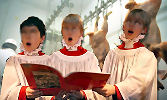 It’s that carol time of year, they’re playing in my head
It’s that carol time of year, they’re playing in my head
I hear their joyful melodies from daybreak until bed,
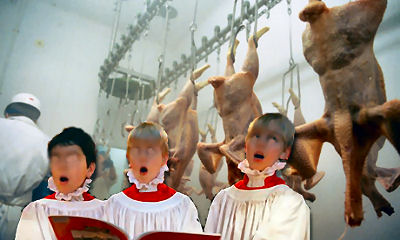 Singing “joy to the world” and “oh Holy night”
Singing “joy to the world” and “oh Holy night”
We hear them in the evening and again when it’s light,
How can we honestly and truly sing “the night is divine” ,
And cattle are lowing, the baby’s born, all’s fine ,
When in our cruel world the suffering is as much at Christmas time,
As any other time of year- with accidents and crime?
And for a song all through the year, people kill each other
One does it to his enemy, another to his brother,
The sadness of each dying soul brings worry and despair
And grief and all the hollowness of losses hard to bear
We pretend the peace and comfort some experience each day,
Is normal and ubiquitous and all the world’s at play,
But not far from where we live, others’ innocence is melted
A dog tied up for days on end, without food or drink or shelter
Cries out for help but no one comes, a casualty of the system.
Forgotten by her owner, the trusted one.. her world,
Abandoned to live out her fate and at last die of starvation.
A band of happy kangaroos in country quite near here,
Are shot en masse, their world destroyed, to leave the land for profiteers.
Unwitting cattle in the north are bred to be exported,
They grow up strong and fat til ready to be sorted.
Obedient, and trusting they line up to board the ships,
Without the need of prodding, manhandling or whips,
Their last few days on board the ship of misery and torture
Finish not in green and rolling fields, gentle weather and good fortune
But in blazing heat or blistering sands
Of far away and foreign lands
Greeted not with care or kindness but brutal actions and dislike,
For crimes they’ve not committed not in memory or in life ,
Of course we shouldn’t send them and our government's to blame
Their hands are stained all red with blood. Most of them are the same.
So Happy Christmas everyone, I hope your table’s loaded,
That brothers talk and mothers speak in phrases carefully worded,
And that carols play for you that day all spiritual and sublime,
To make this festive holiday a holy wondrous time
And you hear the finer voice of yours, your mind can carefully capture
Then you will see the purpose clear, a duty. ‘Twill enrapture!
Acts of animal cruelty at a major poultry processor: Petition and Lateline transcript
 Please help spread the word on this Animal Liberation petition.
Please help spread the word on this Animal Liberation petition.
http://www.change.org/en-AU/petitions/bing-lee-stop-the-offer-of-a-free-turk
ey-with-fridge-or-freezer-purchase. It relates to Animal Liberation's expose earlier this year at an Inghams turkey slaughterhouse where turkeys were beaten repeatedly.
 Lateline Report with video footage (Text below)
Lateline Report with video footage (Text below)
Lateline Report transcript
Australian Broadcasting Corporation Broadcast: 20/03/2013
Reporter: Michael Vincent
Animal Liberation has obtained video footage of workers apparently bashing and kicking turkeys at a major poultry processor on the outskirts of Sydney.
Transcript TONY JONES, PRESENTER: Police are being asked to investigate video footage that appears to show repeated acts of animal cruelty at a major poultry processor on the outskirts of Sydney.
The video, showing some workers bashing and repeatedly kicking turkeys, was obtained by Animal Liberation at an Inghams plant.
And a warning: there are some graphic and disturbing images. This exclusive report from Michael Vincent and producer Sashka Koloff.
MICHAEL VINCENT, REPORTER: For two weeks hidden cameras tracked workers as they took turkeys from crates and shackled them before they were stunned and slaughtered
A fallen bird is kicked. Then kneed. Distressed, it flaps about helplessly and is kicked again.
The bird's distress appears to bring joy to this worker.
Finally the bird is picked up and slammed onto the floor and bashed into the cages four times.
A co-worker observes without intervening.
And then a final act of cruelty: the turkey is repeatedly stomped on until it is still.
This is just one incident from two weeks of covert filming at Inghams' turkey processing plant in Sydney's south-west.
Here, another bird is bashed and kneed.
On another day, a bird is kicked five times.
It appears to be common behaviour.
Sometimes the workers take it in turns to knee then kick the same bird as it hangs in its shackles on the production line.
A few seconds later, the two workers appear to celebrate. Then one of them slams a bird against the factory wall.
These live birds are treated like toys to be ridden or bashed.
EMMA HURST, ANIMAL LIBERATION: I think this is definitely some of the worst that we've seen.
MICHAEL VINCENT: Emma Hurst is from Animal Liberation which provided the footage to Lateline.
EMMA HURST: You're just seeing this whole - complete disconnect from the suffering that these animals are experiencing as though these animals are just mere objects and that they're there for their enjoyment to torture
them.
MICHAEL VINCENT: Here, a worker apparently tries to separate the bird's head from its body, stretching its neck from the cages while it is attached to the moving shackles. He fails. But later, there's another attempt. The bird
breaks free.
EMMA HURST: Every single day we found incidences of concern where workers are going out of their way to intentionally abuse these animals and to cause harm on these animals. And that's - it's just absolutely horrendous.
MICHAEL VINCENT: It's not just the intentional harm; there are also serious concerns about the general handling of the birds.
EMMA HURST: Because these birds are so large, it's not appropriate for them to be shackled. If you think about an eight to 17-year-old - eight to 17 kilogram animal, it's almost the same weight as a three-year-old child being
hung upside down by its ankles and we're seeing feet actually rip off the animals as well.
MICHAEL VINCENT: Animal Liberation says these images capture legs being separated from live birds.
This, however, is perhaps the most telling image captured in the entire two weeks.
Look at this. The worker - you can actually see him - he looks around, sees his work colleague, goes and has a check of the doorway and then comes back to line up the animal.
EMMA HURST: Yeah, so, it's looking around to make sure - he knows there's something wrong with this. It's not that these people could argue that, you know, "We thought that this was perfectly fine. They know that this is unacceptable.
MARK SIMPSON, VETERINARIAN: Having done work for a number of welfare organisations, it's amongst the worst I've ever seen.
MICHAEL VINCENT: Dr Mark Simpson is a vet who has viewed the footage. He's been asked by Animal Liberation to prepare a report which will go to police and animal welfare authorities.
MARK SIMPSON: If this sort of behaviour was witnessed in general public, there'd be a huge outcry. There'd be - the people involved would be physically restrained, I'm sure, police would be involved, the full force of the law would be brought immediately to prevent any further pain and suffering to animals.
MICHAEL VINCENT: At Inghams' processing plant the production line was continuing today. Inghams is Australia's largest turkey processor.
This afternoon we went to Inghams' Sydney headquarters to show their CEO the footage.
We've just spent an hour in the office of Inghams chief executive Kevin McBain. He sat silently while watching the entire footage. He's declined to give us an on-camera interview, but he did provide us with this statement:
KEVIN MCBAIN, CEO, INGHAMS (male voiceover): "We want to reassure Australians that Inghams does not tolerate the mistreatment of our livestock. We condemn the animal abuse we have seen in the footage and will - as a matter of urgency - work to review, retrain and reinforce our animal welfare standards throughout our organisation. We are investigating and working with all relevant parties to address and resolve these intolerable incidents."
MICHAEL VINCENT: Animal welfare groups are now demanding constant CCTV monitoring in all abattoirs.
MARK SIMPSON: I'll be making a strong call in my report for mandatory video monitoring of these critical stages in the process of slaughtering animals. They're - you know, these animals give their life for the benefit of humans and we have a responsibility to make sure where that happens, it happens as humanely as possible.
MICHAEL VINCENT: New South Wales police have been asked to investigate the Inghams footage.
Michael Vincent, Lateline.
TONY JONES: And you can read Inghams' full statement on the Lateline website, below.
20 March, 2013
Media Statement
"In light of the footage that we have viewed today we want to reassure Australians that Inghams does not tolerate the mistreatment of our livestock.
We condemn the animal abuse we have seen in the footage and will - as a matter of urgency - work to review, retrain and reinforce our animal welfare standards throughout our organisation.
Inghams has a strong commitment to animal welfare. We have Best Practice Animal Welfare Programs and Standards in place. We work with regulatory animal welfare specialists to ensure these programs are active and operating throughout all aspects of the company. The programs are regularly audited internally and by second and third party auditors to ensure compliance with standards.
We are investigating and working with all relevant parties to address and resolve these intolerable incidents."
Kevin McBain, CEO, Inghams Enterprises Pty Limited
BlackFish - Death at Seaworld
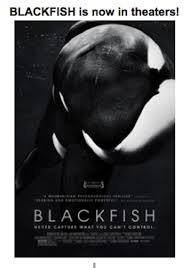
Blackfish tells the heartbreaking and shocking story of Tilikum, an orca who was torn from his family in the wild and imprisoned in a concrete bathtub at SeaWorld, where he made headlines after killing trainer Dawn Brancheau in 2010. After more than 30 years in captivity, he lashed out in frustrated rage, drawing worldwide attention to SeaWorld’s practice of imprisoning sensitive, intelligent marine mammals and denying them everything that is natural and important to them.
Screaming orca fated for SeaWorld urges public to watch Blackfish
BlackFish – official trailer
Attracting up to 12 million visitors a year across the three locations, SeaWorld was rocked by Brancheau's death after Orca whale Tilikum dragged her by her ponytail into the water, scalped her and dismembered her.
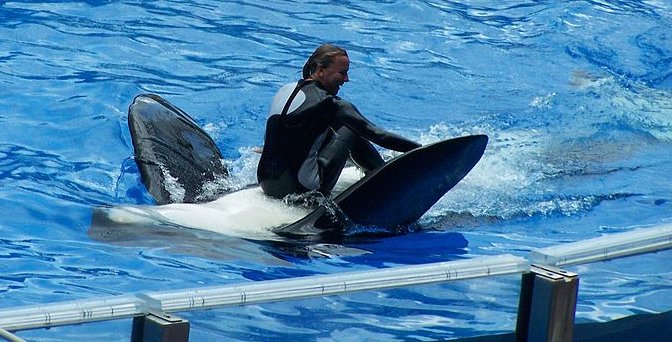
Officials claimed trainer Mrs Brancheau's hair brushed the nose of the killer whale, called Tillikum, as she petted him in a pool (2010).
Mrs Brancheau, an experienced trainer, was lying down in a few inches of water with her head close to the whale when it reached across to grab her hair.
The whale grabbed the 40-year-old married trainer in its awesome jaws and held her until she drowned. The death was witnessed by up to 50 tourists.
Kidnapped Marine Wildlife
Kidnapping marine life from the ocean, removing them from their families, imprisoning them for life, and forcing them to perform tricks for people who pay $75 a ticket is not about educating the public as Sea World would have you believe; it's all about profits.
John Crowe, a former diver, explains the kidnapping process in one of the most poignant interviews in Blackfish. In 1970, he was involved in a kidnapping operation in Puget Sound, Washington. When he and the other hunters tried to get the baby orcas into a stretcher, the family was in a big line communicating and refused to leave when their nets were removed.
At that point, he realized he was kidnapping a child from its mother. On the verge of tears, he said it was the worst thing he'd ever done.
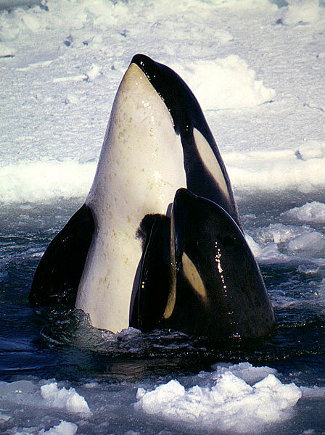
Unbeknown to the the victim, and the public, Dawn Brancheau was not Tilikum's first casualty.
In 1991, trainer Keltie Lee Byrne fell into a tank holding Tilikum and two other whales at Sealand of the Pacific in Victoria, Canada. A homicide inquest found that the whales had prevented Byrne from climbing out of the tank and ruled her death an accident.
Soon afterwards he was sold to SeaWorld where he sired 12 calves.
In 1999, 27-year-old homeless Daniel Dukes was found dead and nude, draped over Tilikum’s back. He had stayed until SeaWorld closed for the evening, evaded security and managed to get into the tank.
"Death at Seaworld"
Death at SeaWorld is written by New York City reporter David Kirby, who claims that killer whales kept in captivity suffer immense emotional and psychological trauma and spoke to former trainers and campaigning animal rights advocates to present his damning case. Staff interviewed by Kirby told him of killer whales destroying their teeth on metal gates and then subsequently having those teeth removed by staff wielding power drills.
He claims that calves are separated from their mothers, causing both parent and child massive distress and in one instance almost leading to a fatality as an irate mother took out her anger on a trainer at SeaWorld's San Diego headquarters.
There are no known records of killer whales attacking humans in the wild, while even mild aggression towards trainers at close quarters is not uncommon.
Orcas are inherently wild animals, and their size, behaviours, psychologically damaging capture, separation from their mothers and pods, and having to be confined in bath-tub sized aquariums, makes them unsuitable for training, displays for human entertainment. It seems that people like to see wild animals “perform”, in a submissive display of dominance.
MRI scans have revealed that Orca whales have a large component of their brain used for processing emotions. They have a language, they move in large interconnected families and, as one hunter said, ‘they know what is going on.’ The wails are nothing more than the sounds of excruciating grief.
Killer whales are incredibly beautiful, intelligent and emotional animals. They simply do not deserve to be ripped away from their families and kept in restrictive concrete pools for the entertainment of humans. Keeping animals in captivity is bad, but the depth to which it damages and arguably destroys them, and they become self-destructive and spontaneously violent.
The Australian Sea World doesn’t have orca whales, but it does have dolphins and a baby polar bear – all of whom I reckon would rather not be kept in enclosures in Queensland.
Things at SeaWorld are not looking good—even its owners are jumping ship. Following declining ticket sales and a public outcry over the documentary Blackfish, the chair of SeaWorld's board of directors David D'Alessandro sold 43,179 shares of the company's stock.
Investigating Animal Cruelty? Suggested Procedures


 This paper was written by Barrie R. Tapp, Senior Investigations for Animal Cruelty Hotline Australia, with the intention of helping you try to understand the frustration and red tape that exists in the animal welfare world whilst trying to help our friends the animals.
This paper was written by Barrie R. Tapp, Senior Investigations for Animal Cruelty Hotline Australia, with the intention of helping you try to understand the frustration and red tape that exists in the animal welfare world whilst trying to help our friends the animals.Investigating an Animal Cruelty Complaint will be frustrating but can be most rewarding too
There are no rules when investigating an animal cruelty complaint, but you must always use your judgement & common sense in each situation. However, it is recommended that your response can be guided by the following suggestions:
What would a reasonable person do when confronted with a cruelty complaint in the first instance?
No 1. Notify police, RSPCA &/or DEPI of your intentions and seek expert advice before entering into an investigation:
At the scene
Always take a camera with you and remember your first priority is your intention to help an animal in distress. When taking photographs ensure that they are taken outside the fence line, clearly showing the fence in the picture, as evidence that there has been no trespass or illegal entry. This is because, unless permission has been granted, you have no legal rights to enter any property or premises (unless of course you have an “authorisation under section 18 of the Prevention of Cruelty To Animals Act” - POCTA.)
Any witnesses? Note their names, addresses, phone numbers and any conversations had with them, & a follow-up contact.
Observe closely the conditions as you approach the property, and document them:
Note the condition/s of any other animal in view on the property that day?
Preparing for Owner Reactions: The owner or anyone responsible for the care of the animal may be present upon your arrival. This will be part of your most difficult time when investigating animal cruelty complaints and should only be done with an experienced and respected investigator if possible. Any confrontation with any owner of any animal can result in a response that can range from cooperation to abuse, so be PREPARED for anything. It is important to remember this when confronting an individual so be on your guard.
You may be faced with a situation in which animals are in a very bad condition. You may have already obtained signed statements attesting to the animals' condition. This may be in addition to your own observations. If it is a situation where you anticipate that confronting the owner first will cause him to remove the animals before you have a chance to contact authorities, your best option would be to notify Police/RSPCA/or DEPI beforehand of your intentions. Anyway this should automatically be mandatory in the very first instance if you have already considered investigating this complaint and summed up the validity of the complaint.
Remember! If the animals are in close view, easy accessible, take photographs of them from a location where you are not trespassing. The photographs will become very useful in and as evidence in a Court case.
Animal's Condition and the Circumstances in which they are kept!
Based on the allegations that you have received with this complaint, anonymous or not, about an animal that you have personally observed in this situation, and in which in your opinion an animal is allegedly neglected or abused, take notes at the time. Remember DO NOT put yourself in a position that would endanger yours or any other person’s life or welfare at any time.
Notes should contain:
- Arrival at the scene, times etc.
- Condition of neglect/abuse/cruelty.
Your assessment of the circumstances and conditions will determine how you proceed further. If the complaint concerns a quantity of animals (presumably farm animals) you need to report this to the DEPI as soon as possible because they are the authorised agencies empowered to investigate “farm”animals as per the legal definition. In turn they also have a memorandum of understanding with the RSPCA regarding investigations of farm animals (also known as MOU) in this state! Report immediately!!!
All reports and complaints MUST go to DEPI Animal Health compliance manager (phone 56242277). This is then given to the appropriate area of concern or call centre on 136186! I have found this service great at all times.
Take notes at the time. Examples below as listed:
- Animal/s are very thin (describe condition eg; hip bones, ribs, pelvic bones visible etc.)
- Animal is scratching or rubbing against fences, alleging from mange or lice or some other disease.
- Animal has sores on its body (describe them how big, weeping, open bleeding)
- The animal is limping/indicate the veracity and which leg.
- Appears living in filth, squalid conditions (describe the conditions in detail)
- Conditions/elements of the weather hot sun temperature, raining, windy. (as animals without shelter in the hot sun or wet conditions could die)
- The animal/s do not have proper shelter (for example, what is the shelter provided on the day and does it suit the size and entry for the animal)
- Water bowl overturned (if domestic animal)/ no fresh water available and check for any dams(for ruminants large farm animals)
- The animal's general appearance without exaggeration (describe in detail eg; lethargic, not interested in your presence slow moving etc.)
Note: If an owner is not at home, and your observations indicate that an animal IS being neglected in your opinion, immediately contact the proper enforcement agency (e.g. RSPCA/Police/DEPI) to investigate the complaint.
If you feel confident and you have followed all protocol and legal requirements and feel confident, try the following suggestions:
Attempt to talk to the owner and ask to examine the animal but also keep in mind that you are not a vet.
Discussion with the Owner:
Discuss the welfare of the animal and ask how the situation evolved for the animal/s to get into the condition that they are now in. (Take notes)
If the owner wants to surrender the animal for the sake of its well being always obtain a written statement granting permission for you to seek arrangements from your local welfare agency to take care and control of the animal/s.
Make totally sure that before any animal/s are removed from the property you first seek the aid of the relevant welfare agency (or local/ranger officer) and a veterinarian to gain a clear health bill before the animal/s can be transported. (MANDATORY.)
PLEASE NOTE: These are recommendations only!
You must use your own judgment and always remember that you have NO AUTHORITY under the animal welfare legislation in this state as a lay person. Under the Prevention Of Cruelty To Animals Act in the state of Victoria the only persons with this authority to enforce these powers are “general inspectors” that are “authorised by the Minister in writing under section 18 and 18A for specialist inspectors.” This is what is known as an “approval” from the Minister. Only these general Inspectors can enforce & and prosecute under all sections of the “Act”!
If a complaint is in the country or a remote area it is always advisable and MANDATORY (in my own personal experience) that you always notify police or RSPCA/DEPI of your intentions and if possible take another person with you. At all times when we have complaints to investigate in country or remote areas our first priority is to visit the local police station and advise them of your intentions.
Points to remember!!!
Record ANY statements and conversations that the owner/or any other persons may make.
Contact the animal welfare animal agency(RSPCA/DEPI/LOCAL LAWS/POLICE) and ask them to visit the scene BUT only when all your information is collated and you feel that the complaint is genuine, as resources are limited with most animal welfare agencies especially RSPCA, and that is the reason that we do the legwork for them prior.
Photograph the animal/s and all surroundings and NEVER let this film out of your possession at any time as this is vital evidence and continuance of possession is also vital in a court of law.
Have a veterinarian in attendance if possible as vets are expert witnesses( but very costly.)
NOTE: Always keep your office informed at all times and never try to be a hero!
***Do NOT ever put yourself or any other person in any danger whilst gathering any information or evidence. It is only your mandate to gather, collate, and assist an animal that is all. You are not qualified nor are you a trained investigator. ** (REPORT AND ASSIST THE ANIMAL AND RETREAT GRACEFULLY!) ****
Arriving at the scene
Example of an urgent case of alleged cruelty complaint!
Animals in locked car/or behind locked door: Consider the following:
If circumstances involve an animal suffering from heat exhaustion, such as a dog in a hot car, call police to remove the animal from the circumstances immediately.
Take the animal to a veterinarian for treatment, if necessary with the permission of the police.
PLEASE TAKE NOTE!! Entering Property? Some Considerations & Answers! There are NONE. Never even consider entering into or onto someone else’s property illegally no matter what the circumstances are. Full stop!!
Abandonment
You may receive a complaint that an animal has been left without food or water for several days and, appears to be abandoned. In this situation it is especially important that you must obtain a statement from any complainant to establish how long the owner has been gone and how long the animal has been without feed/water! And report it immediately to the animal welfare agency.
Arriving at the scene in the case of alleged abandonment.
When you arrive at any property, announce your arrival, and look for the owner/occupant. Knock on the front door to see if anyone is at home. If no one answers go to the rear of the house and knock on the back door, then shout out for the owner/occupant. (This is not classed as an illegal trespass as anyone is entitled to this privilege.) Look for the animal that IS the cause of the complaint and any other animals that may be on the property.
Exercising this type of behaviour calling out, looking for the owner demonstrates a "good faith" effort in finding the owner/occupant while doing your job and attempting to assist an animal in need.
If you discover an animal on the property determine what circumstances now exist for you to solve this case scenario.
The animal you have sighted appears to be in a neglected state but not in danger of dying: Feed/water it IF your investigation has led you to believe that it may have been abandoned. If you cannot see any animal but hear sounds inside a locked house you must call for legal assistance. In either case consider the following approach:
Talk to the neighbours, to determine how long the owner/occupant has been gone. Obtain signed statements, if possible.
Based on the input you receive report immediately to the authorities.
Most of the animal related complaints you receive deals with neglect and abuse. They will generally involve the “failure to provide” which means the animals:
- are not being fed or watered properly,
- are lacking an appropriate shelter,
- are not being exercised
- living in unsanitary conditions, or
- needing veterinary care.
Though many complaints may be anonymous, you should still investigate them. Most anonymous complaints are legitimate; people often refuse to give their names because they fear reprisal.
Questions to ask with regard to animal complaints
Regardless of whether the complaint is anonymous or not ask the following questions:
- What is the name and address of the alleged abuser (if known)? Can you describe what he looks like?
- What types of animals are involved in the complaint, and how many of them are there?
- Why do you believe the animals are being abused or neglected? And for how long?
- Where are the animals confined? Can the animals be seen from the road side or through a window?
- When was the last time you saw the animals and have you seen them recently?
- What were the weather conditions at the time of the abuse or neglect? Was the weather extremely hot or cold.
- What are the directions to the location of the complaint? What road, landmarks to get to the property.
You should investigate the complaint as soon as possible to bring relief to the animals that are suffering.
Call the RSPCA/DEPI/POLICE of your intentions at all times.
REPORT! REPORT! REPORT!! My best suggestion to all who are involved in animal welfare and that is to obtain a Prevention of Cruelty to Animals Act also known as POCTA and read it!!You can get these at a print out from your local library.
Some Common Excuses You Will Hear!
Be aware that in many cases, the “abuser” makes these excuses in an effort to avoid being punished.
“The animal is thin”. The truth is that animal is not being fed enough nor has a serious case of internal parasites.
Excuses: (Heard them all I’m afraid)
- Oh, I guess we take him on too many walks. He must be getting too much exercise.
- He's always been a thin dog.
- He is such a fussy eater lately.
- His mum was thin, too.
- You should have seen him when we got him. He's put on a lot of weight since then.
- He's being treated by a vet. This may or may not be true and must be checked out as soon as possible.
Your possible responses:
- Where and when did you get the animal?
(Consider checking with that person or place as to the condition of the dog when it was given to the person.)
- Who is your veterinarian? When did you last have the animal examined?
(If they give you the name of the veterinarian, check with the veterinarian to see when the animal was last seen and its condition at that time.)
- When do you plan to have him vetted again?
(Make sure the person gives you a reasonable time frame, within the next few days. Check with the veterinarian to ensure the animal was seen and to determine the veterinarian's opinion of the animal.)
- What do you feed the animal every day and how much?
(When they respond with the amount of food they give the animal, consider telling them that given the condition of the animal, that amount of food does not appear to be proper or adequate.)
NO WATER:
Excuse:
- He must have drunk it all. I gave him a big bowl this morning.
Your possible response:
Get it water now please
Excuse:
- Every time I give him water, he knocks his bowl over!
Your possible response:
That means he is not getting enough water so supply a bigger bowl.
Excuse:
- He knocks over that water bowl all the time.
Your possible response:
Get a bowl that doesn't tip over.
Animals that are kept outside, shelter must be available at all times as per the “ACT” and codes of practices apply and must be abided by: “proper and sufficient shelter"!
REMEMBER THESE ARE ONLY GUIDE LINES TO ASSIST YOU IN YOUR ENDEAVOUR TO HELP ANIMALS IN DISTRESS. REMEMBER THAT RSPCA NEED AS MUCH INFORMATION AS POSSIBLE BEFORE THEY CAN INVESTIGATE ANY COMPLAINT AND THIS IS WHY THIS PAPER WILL ASSIST YOU IN BECOMING ALERT AND TO ASSIST YOU IN BECOMING EXPERIENCED IN COLLATING EVIDENCE TO SUPPORT ANY COMPLAINT.
**Important phone numbers** RSPCA(operate 24/7), DEPI: 0356242277. This is the main number to call and it will be transferred to the appropriate areas). Or call Animal Cruelty Hotline (Aust) 1800751770 and we will assist with any complaint.
This paper was written by BARRIE R.TAPP SENIOR INVESTIGATIONS FOR ANIMAL CRUELTY HOTLINE AUSTRALIA with the intention of helping you try to understand the frustration and red tape that exists in the animal welfare world whilst trying to help our friends the animal. PHONE 1800751770 FREE CALL 24/7”
MY MOTTO TO LIFE!”NO ONE HAS A MONOPOLY ON ANIMAL CRUELTY IT BELONGS TO ALL MANKIND.”
Puppy factories in Victoria - abhorrent conditions could be legalized
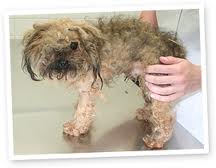

Back in 2010, the Victorian Government made a pre-election promise to increase penalties for breeders found committing acts of cruelty and to eliminate illegal and/or poorly run puppy farms. Considering this, it is appalling that the Government is recommended "revisions" to its Code of Practice for the Operation of Breeding and Rearing Businesses. This code sets out the minimum standards of accommodation, management and care required by breeding and rearing establishments. This revision would legalise some of the abhorrent conditions and practices regularly seen by RSPCA Inspectors at puppy factories.
(images are the property of Oscar's Law)
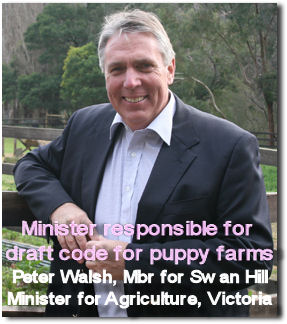 I and many of the caring members of the public, would like to see the end of intensive breeding of dogs and cats for domestic sales. Why, when we have shelters overloaded and excessive numbers of animals being dumped and on death row, should these "businesses" operate anyway?
I and many of the caring members of the public, would like to see the end of intensive breeding of dogs and cats for domestic sales. Why, when we have shelters overloaded and excessive numbers of animals being dumped and on death row, should these "businesses" operate anyway?
Companion animals should be that - companions. It shouldn't be an industry. More people are moving into units and apartment and animals are banned. Shelters and rescue organisations/charities end up picking up the pieces, the high numbers of animals discarded by society because of over breeding.
Downgraded and inhumane conditions for the benefit of the industry
Under the revisions, staffed ‘business hours’ for breeding and rearing establishments have reduced from 12 to eight hours a day. How are the animals meant to be cared for and their social/environmental needs met?
Litters need care and attention and mother dogs should be nurtured and protected. Long periods of isolation and non-attendance is not acceptable. They don't need to provide any warm bedding and there's no cap to the amount of litters that dog can have, so it can be legally bred for birth to death.
Puppy factory dogs are viewed only for their ability to make their owners’ money. Puppies are often confined in crowded cages with no room to move. The mortality rate of the puppies is quite high because veterinary care is scarcely provided. Puppies that do survive and are sold often suffer from ongoing health issues that the new owners have to pay for.
Vet checks to ensure animals are fit for breeding are no longer required before animals are bred from. How are any standards of "animal welfare" to be improved? Breeders will be able to declare an animal fit for sale – rather than vets. How will they be qualified?
The recommendations allow for ‘any method’ of euthanasia as long as it is humane. Humane is not defined and ‘any method’ could, in theory, include shooting or blunt trauma, causing incredible suffering. How is "humane" meant to be defined? We can't feel the animals' pain. This could mean animals are open to horrific attacks, and it's called "euthanasia".
There must be 24 hour per day veterinary access for the animals if they are sick or injured. "Any method" is far from being acceptable and chillingly callous.
There would be no maximum breeding age or period that an animal could be bred from, meaning these animals can potentially spend their entire lifetime confined to breeding establishments. Dogs and cats would be condemned as breeding machines, and valued for nothing more than producing litters. How is this "animal welfare"? This is commercial breeding, and all the evils associated with it.
Under the recommendations, some categories of puppies must not be left without food for more than 12 hours. The feeding of raw offal is now permitted in conjunction with a complete worming program. Standards of animal care are being weakened to cave into the industry's political and commercial powers.
A blight on our society
Puppy factories must end. There's no way to soften and make acceptable the fact that they are inhumane and a blight on our society.
If animals are to be adopted, first and foremost the potential buyers should go to one of the many shelters and homes for dogs and cats. There are many needing homes. Otherwise, they should go to a breeder and get expert advice. Puppy factories operate in secret, and they can't be contacted. They are not transparent to the public.
These callous breeding facilities are producing animals for mass markets, without accountability. Australians should be enlightened and our society should be walking and working towards more humane animal welfare systems, not in the retrograde darkness of lost and unwanted dogs and cats, and "businesses" breeding animals in cages for profits. They are cruel and unjustified, and are producing litters of animals for an already saturated market.
Pet shops should be linked to shelters and registered breeders, and not be allowed to sell the products from puppy factories.
Puppy factories must be banned
The Victorian government should ban puppy factories, not trying to weaken standards and loosen controls for the benefit of a few owners of these shameful establishments. These dark places can't be justified by money or profits. The government should be setting high standards, not caving into profit-making through the use of small and defenceless social animals.
Oscar's Law

We can all help fight the genocide in Australia's pounds, promote rescue organisations and shelters as the first option to adopting, and change the way Australians gets their pets. Adoption is the intelligent alternative to impulse buying. No puppy factory whether it is 'clean', 'model', 'state of the art' or otherwise is the answer for mans best friend.
Oscars Law is an organisation committed to "We no longer want the pet industry to mislead us about what is acceptable for our animals”.
-Abolish the factory farming of companion animals.
-Ban the sale of companion animals from pets shops/online trading sites.
-Promote adoption through rescue groups/pounds/shelters
Who is Oscar?
Oscar was one of a number of dogs who were rescued from a puppy factory in central Victoria where they had been neglected to the point they required urgent veterinary care.
The list of ailments the dogs suffered was extensive, including:
Severe matting — the dogs had to be sedated in order to shave their painful matted fur away from their skin; ear infections; gum disease; and rotten teeth. Once their matted fur was shaved it was evident that painful grass seed abscesses covered their bodies. The dogs were so severely malnourished their irritated skin was like paper and they were grossly underweight.
Days later and recovering from surgery, Oscar was returned by authorities to the very people who failed to provide veterinary care and neglected all their dogs including Oscar. They have never been charged with cruelty and Oscar remains in the puppy factory.
Oscar’s Law Campaign is in memory of all the ‘Oscars’ hidden away on factory farms treated as breeding machines to supply the pet industry.
Make a submission to the DEPI
Submissions may be emailed to [email protected] or posted to
Postal Address:
Breeding and Rearing Code Review
Bureau of Animal Welfare
475 Mickleham Rd
Attwood, Vic, 3049
Hard copy submission must be post marked before 14 August 2013 to be accepted
More information
DEPI: domestic animal businesses- breeding and rearing code review
Life in an economic machine
 Life is increasingly serious, it seems to me. Or is it just what I choose to watch on television or read, especially on the Internet? Quark writes about our Heath Robinson government in Victoria, of the war between cyclists and nature lovers over parkland, of factory-farming of human masses and the tedious obligation of infinite pseudo choice.
Life is increasingly serious, it seems to me. Or is it just what I choose to watch on television or read, especially on the Internet? Quark writes about our Heath Robinson government in Victoria, of the war between cyclists and nature lovers over parkland, of factory-farming of human masses and the tedious obligation of infinite pseudo choice.
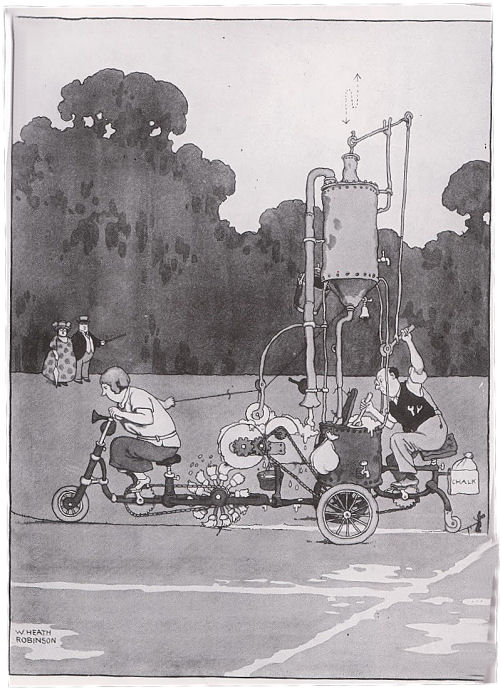
It’s not that I go looking for trouble exactly.
I have what I would call a normal concern about our environment, not only because I enjoy nature but because I think I understand its inextricable relationship and importance to us. I also think I have a normal concern about the future, about the way animals are treated and about preserving native species and even about people and their quality of life.
Who doesn’t care about at least some of these things?
The sad thing is that I can’t find any good news, anywhere on these fronts.
Everywhere I look things seem to be getting worse
Everywhere I look the situation seems to be getting worse and I am constantly confronted with images and accounts of suffering factory farm animals, homeless, doomed orangutans whose forest homes have been decimated, kangaroos being culled, and cattle tortured after an interminable journey to the other side of the planet before what must be the final real relief of expiring.
I think, to be a happy balanced person, I’m supposed to focus on other things and to appreciate the “privileged” place in history and in geography in which I find myself.
I’m supposed to thank my lucky stars that I live in the age of mass communications, especially the Internet.
I must say that I really do appreciate these things which I am using right now but, at the same time, there are so many other aspects of our contemporary world that are draining it of enjoyment.
This effect is a combination of how changes to our political, social and physical environment affect us directly and the pressures that human existence place on other creatures. I learn about these things via the very media which I have just acknowledged as a great plus.
Daily deluge of pleas to save the helpless from us
Daily, I am deluged with electronic pleas to help stop baby seals being clubbed to death, save bears from being caged for the purpose of draining bile from them, to save from logging, forests in my own state which are home to the engaging and endangered Leadbeater's possum, the Victorian state emblem.
Even if I did not look at electronic media, I would still receive through my letter box appeals for funds to help the hapless products of puppy mills or to rescue other cruelly treated malnourished domestic animals.
It is well known that laying hens are kept in tiny cages, their little feet never scratching in the earth. If this were not bad enough, the media is oozing with propaganda meant to coax people, push them, finally forcing them through price into minimal sized apartments with little or no natural light.
Factory farming the human masses
Housing for the masses is now all about minimally accommodating people rather than providing living space.
Both situations - for hens and for people - are utilitarian, functional and completely inconsiderate.
I then read and hear about scarce public parkland being appropriated for road construction. At best one could see this as a utilitarian approach about traffic and transport rather than about people and their lives, at worst a project for its own sake.
Stealing our parkland and enemy cyclists
Parkland is a luxury that can be just stolen from the people it seems. This can happen in Melbourne or Istanbul.
Whatever is happening spawns unexpected competing interests.
The gentle activity of cycling has become some sort of monster! In Melbourne cyclists want bicycle paths as commuter highways through parkland and require the sacrifice of pre-European settlement trees.
The cyclists could traverse the parkland in a meandering fashion on the existing pathways but they want to go at top speed in order to get to work.
You see, cycling is now a mode of transport rather than a recreational activity.
Cyclists occupy the high moral and environmental ground because of their dainty carbon footprint.
This is a kind of war between the cyclists and those who want to preserve the park.
The country’s priorities now seem to be focused on our lives as real estate consumers and workers. Numbers of hours worked, house prices, GDP, company profits, are critical indicators of our competitive edge.
Are these things really life or death?
Heath Robinson government
We seem to be trapped in a very unimaginative version of a Heath Robinson machine with no detours.
Even our recreation seems to be about something organised and orchestrated from a higher power like the AFL (football) rather than our own ways of re creating ourselves. Our private activities and invented fun have literally no room in contemporary life.
Opportunities for creative play are being removed as open space diminishes and we are funneled into profit making arenas of entertainment. These opportunities are being removed as the ratio of nature to humanity decreases and access to nature diminishes, becoming less accessible in crowded, regulated, expensive cities.
Even our precious spare time is hijacked by organisations.
Things that I never used to have to make decisions about and could leave ticking away in the back ground are now items I am supposed to spend time on. I refer here especially to telcos and to energy supply.
In a nutshell, it requires quite some calculation to ascertain if one company is better value than another. This question comes up several times a week through phone calls interrupting my peace or someone at the door insisting that I go and find my last electricity account. Even after I have worked out the advantage of one over another, it will have all changed by the time I get around to working it out again and I’ll find I’ve been on the wrong plan or with the wrong company.
'Choice' - a tedious obligation
Did we ever really need this in our lives? “Choice” has become a very tedious obligation.
The Internet, smart phones, the “vibrancy” of a city growing in population at an enormous pace, Skype, Twitter, tablets: all these should make me happy.
The trouble is that I am losing what really made me happy.
Normal life increasingly criminalised
At the risk of appearing to indulge in nostalgia, our lives are far less free than they were. Big Brother is out there doing its robotic best to nab us in a hapless 100 metres of driving at 64 in a 60 zone or the parking officer is doing his level best to add to his daily quota as we tear back to our parking meters when a community meeting goes 10 minutes too long.
Even using water has become a sort of crime whereas it was once part of our lives and it was OK to hydrate both ourselves and our environment. Friends boast to one another that they never water their plants or are getting rid of their gardens. My neighbours have covered theirs in concrete slabs which will be very economical on water.
All the above symptoms impose stress and remove spontaneity and freedom. It is the effect of our governments imposing themselves on us and overcrowding us so that we are constantly banging up against the will and interests of others, the limits to resources, and being reminded us of the cost of everything, every minute of the day.
Along with the loss of fun and freedom in contemporary life, there is a burdensome overlay of the oppressive and unhelpful role that governments play in our lives. There’s a feeling of being administered, of having ideas, projects and changes to our environment imposed on us; of control of our world coming from somewhere outside ourselves.
Julia Gillard turns a cold shoulder to live export activists
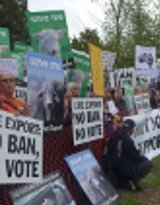
More than 100 protesters rallied against live animal exports during a Federal community cabinet meeting in the marginal Melbourne Labor seat of Deakin.
Animals Australia organised the event with plans to greet Prime Minister Julia Gillard on her arrival at the Norwood Secondary College venue in Ringwood. There was a heavy police presence.
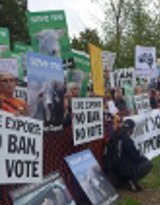
Ms Gillard managed to avoid the animal activists and instead he chose to face a "safe" audience of a mainly welcoming crowd of 300 who showered her with compliments. There were questions on the National Disability Insurance scheme, gay marriage, 457 visa workers, Gonski reforms and Labor's image problem.
The protesters held up signs saying "no ban no vote" and "say no to live exports" as a heavy police presence stood guard at the school in the marginal seat of Deakin.
The PM was greeted with cheers as she entered the school, accompanied by 10 ministers including Treasurer Wayne Swan, Employment Minister Bill Shorten and Communications Minister Stephen Conroy. However, the animal activists were avoided - they must have gone through another entrance!
Animals Australia spokeswoman Lisa Chalk said the protesters wanted the federal government to ban all live animal exports.
To date, the live trade has sent over 160 million animals to be slaughtered in over a dozen countries where there are no laws to protect them from cruelty. Millions have died on ships. Every investigation and subsequent campaign has delivered results for animals — but the members of Animals Australia will not stop until this trade does.
A vote for animals has never been more important as animal welfare standards continue to drop to abysmal global levels. That's why the Animal Justice Party has formed.
The Animal Justice Party (AJP) opposes in the strongest possible terms the export of live animals, to any other country, of all species, for profit, for whatever purpose, particularly for slaughter, on welfare, humanitarian, economic and societal grounds. This is a grubby industry, lacking any real accountability, or transparency, supported by all Australian governments, in which a few private individuals and corporations make money from the misery of millions of sentient creatures.
Tens of thousands of emails hit the inboxes of the Prime Minister and Minister for Agriculture within days of Four Corners. However, the Julia Gillard continues to turn her cold, hard heart against ending the trade due to heavy government support for the livestock industries. It's easier to face supporters than the nitty-gritty uncomfortable topic of animal abuse and cruelty. Blood and pain inflicted onto animals is an uncomfortable topic, best avoided!
New Zealand has already stopped exporting live animals for slaughter on the basis of unacceptable cruelty.
New rules made exporting harder, more expensive, and fewer animals today endure this journey. But the cruelty continues. These rules still allow the fully conscious slaughter of millions of animals exported from our shores every year, condemning them to a painful and prolonged death.
Australians against Live Export - Huge Melbourne 6 October Rally pictures
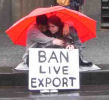 Links for action to help animals added end of page on 23 October Despite pouring rain, perhaps 1000 people attended the Anti Live Export Rally on the steps of Melbourne Parliament on Saturday 6 October 2012. One observer said it was the biggest rally she had ever attended. Among those who addressed the crowd was Animals Australia campaign director Lyn White, whose risk-taking to expose international abuse of sheep and cattle makes her one of the bravest people in the world. Another speaker in the crowd was Kelvin Thomson Labor MP, who also shows more daring than his parliamentary colleagues in this matter and for having campaigned against overpopulation in Australia and elsewhere.
Links for action to help animals added end of page on 23 October Despite pouring rain, perhaps 1000 people attended the Anti Live Export Rally on the steps of Melbourne Parliament on Saturday 6 October 2012. One observer said it was the biggest rally she had ever attended. Among those who addressed the crowd was Animals Australia campaign director Lyn White, whose risk-taking to expose international abuse of sheep and cattle makes her one of the bravest people in the world. Another speaker in the crowd was Kelvin Thomson Labor MP, who also shows more daring than his parliamentary colleagues in this matter and for having campaigned against overpopulation in Australia and elsewhere.
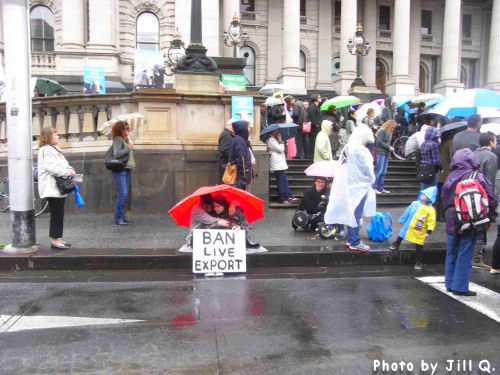
Another observer described the massive gathering in front of parliament House Spring Street.
"Soon after I arrived the crowd spilled onto the road and the rally continued for about one hour with the crowd fully occupying Exhibition Street opposite Parliament House. There was chanting from the crowd led from the front -'No ban, no vote, get the animals off the boat,'"
As the speakers began, the skys opened and up came the umbrellas. Glenys Oogjes of Animals Australia introduced Lyn White of Animals Australia. Lyn who has brought the attention of the public to the atrocious treatment of animals exported from Australia gave an impassioned and determined speech saying that we will win on this issue.
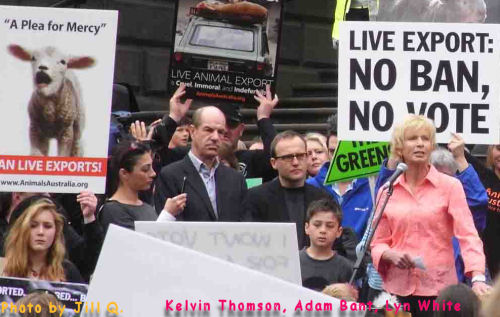
Thomson highlights Dept Primary Industry conflict of interest
This interview with Kelvin Thomson was broadcast on October 3, 2012.
Kelvin Thomson was forceful in his opposition to live animal exports. He highlighted a conflict of interests with the department of Primary Industry overseeing animal welfare and advocated that a separate animal welfare department be created. He also advocated that abattoirs be set up in Australia for export meat – slaughter and processing - and that the live export trade should be phased out all together.
Adam Bandt the member for Melbourne was also warmly welcomed by the crowd.
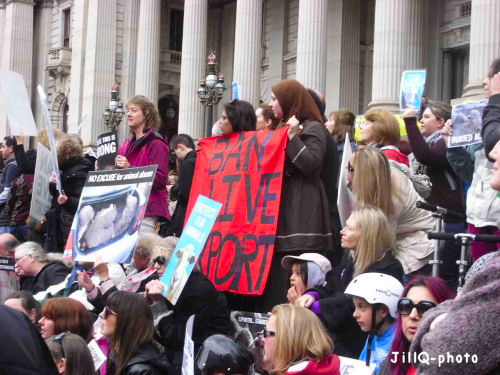
It seems remarkable, but true, that Australians will do more politically to demonstrate how much the treatment of animals matters to them than on any other perennial matter. It is obvious that politicians and the commercial press wish this fact would go away and hope it will if they ignore it. Parliament seems dominated by small-minded bean-counting meanies whose decisions repeatedly indicate an absence of empathy to a degree more usually associated with psychopaths. Australians, classically disorganised by the colonial practice of divide and conquer and the associated structural chaos of constant urban adjustment to continual population growth, still manage to get together for domestic animals. Let us hope that this capacity to organise will spread to protect indigenous fauna and their habitat. There is no doubt that Australians also care enormously about indigenous animals, but somehow they are not yet able to reach these peaks of social impact.
Some ways you can help the animals
Download an action pack from Animals Australia
Here is where you can download leaflets.
Here is where you can go to write a sample letter and send it on-line. http://www.banliveexport.com/1/#takeAction"
More ways to help animals:
- Find additional Live Export - Indefensible campaign tools including sample letters here!
- Join Animal Australia's volunteer network and get active locally!
- Request a free action pack to get you started.
- Learn how to effectively speak up for animals.
- Support our vital work! Become a member of Animals Australia.
Nigel Franks - kangaroo torturer and killer gets off lightly
 On January 11, 19 year old Nigel Franks was driving a car towards Huon Hill with two passengers when he hit a kangaroo.
On January 11, 19 year old Nigel Franks was driving a car towards Huon Hill with two passengers when he hit a kangaroo.
Franks kicked the kangaroo's head twice while laughing, before stomping it to death. Franks then pulled a joey out of the kangaroo's pouch and threw it into a nearby paddock.
Franks hit, bashed and killed a female kangaroo, disposed of its young, and paraded the hapless animal's body down the streets of Wodonga – leaving a trail of blood!
Magistrate Stuthridge told the court that she was deeply troubled by Franks' complete lack of empathy. Why then wasn't he given a jail sentence?
Nigel Franks, 20, pleaded guilty to charges of aggravated animal cruelty, dangerous driving, careless driving, public nuisance and driving an unregistered car in relation to the January 11 incident. The "public nuisance" and driving offenses shade into insignificance compared to the animal cruelty crimes?
Franks was sentenced to six months jail, suspended for 12 months, ordered he complete a 12-month community corrections order, pay a $750 fine and that his licence be cancelled for six months. A more heavy fine could have been directed towards wildlife carers who are always struggling to find funds.
A psychologist's report stated the need for Franks to undergo further psychological treatment but the magistrate failed to understand his reasons for the offences. Actually, there is no "reason" or logic in the violence. It's lack of empathy, evil tendency, lack of a soul, and love of violence. All these traits are found in may violent criminals, and many have started their careers torturing animals.
Melbourne County Court Judge Gucciardo sentenced another kangaroo abuser-killer to jail for shooting an arrow in the head of a hapless kangaroo. They are a protected species.
The violence against animals is sickening and gut-wrenching, and animal lovers and wildlife advocates are advocating for greater protection and higher penalties for animal abuse and killing. This light sentence doesn't meet community expectations.
How many criminals start their careers torturing animals? Acts of violence towards animals are symptomatic of a deep mental disturbance. Research in psychology and criminology shows that people who commit acts of cruelty to animals don’t stop there—many of them move on to their fellow humans. There are numerous examples of such evidence from the childhoods of well-known serial killers.
Franks should have been given a custodial prison sentence to understand the severity of his appalling crime, but he needs psychological treatment as well as punishment. He should be supervised in learning to empathise with animals,how to care for orphaned and injured wildlife. He should pay a heavy fine so funds can be distributed to wildlife carers.
The community should be disappointed by the light sentence given to Franks, at a time when animal advocates are calling out for more severe penalties for cruelty to animals.
Wodonga Magistrates Court,
5 Elgin Boulevard,
(PO Box 50)
Wodonga 3690
Santa visits some pigs at Christmas in Germany
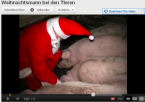 A German animal liberation group slip into a pig-farm and give the pigs a nice Christmas. (Film) Originally posted on 1 January. by Jan 4 it had over 150 reads. Reposted January 6th after loss due to site damage.
A German animal liberation group slip into a pig-farm and give the pigs a nice Christmas. (Film) Originally posted on 1 January. by Jan 4 it had over 150 reads. Reposted January 6th after loss due to site damage.
Twas the day before Christmas and the silence was deafening of billions of animals locked away in factory farm sheds, laying on concrete blocks and unable to turn around, in agony awaiting their slaughter for the insatiable appetite for meat.
This group prepares fruits and veggies and sneaks into a factory pig farm in Germany. You can see that many of the pigs are unsure of what to do with the fresh food as they have never had it before.
These exceptional beings living in filth--doomed to a hell.
When humanity stops these atrocities towards our fellow creatures, only then will this time of year be a "celebration and peace to all"
Below are two films which show what life looks like for pigs in their native habitat. What a contrast.
For the Animals
Jaylene Musgrave
Vegan Warriors
Gold Coast mayor wants to ban rodeos
 There is a move by a GoldCoast mayor to ban rodeos. Animal rights defenders want you to support this move. One way you might consider doing this is to vote on line for banning rodeos from Gold Coast City Council land and cutting funding for such events. You can
There is a move by a GoldCoast mayor to ban rodeos. Animal rights defenders want you to support this move. One way you might consider doing this is to vote on line for banning rodeos from Gold Coast City Council land and cutting funding for such events. You can 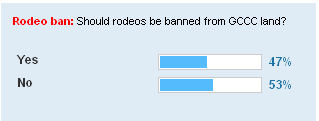 vote here.
vote here.
"Gold Coast mayor plans to ban rodeos
by Matthew Killoran, Gold Coast News com au, October 18th, 2011
"A CONTROVERSIAL plan by Mayor Ron Clarke would see rodeos banned from Gold Coast City Council land and funding for events involving rodeos or "animal cruelty" cut.
The annual Rotary Bulls on the Beach charity event and the Australia Day rodeo at Evandale are likely to be affected and the move could see the city lose the National Finals Rodeo, which attracts thousands of spectators and has been estimated to bring $10 million to the city each year."
The article goes on to say that the same Mayor managed to ban circuses using exotic animals from operating on council-owned land in 2009, and that the idea of banning rodeos was a response to a letter from the Animal Welfare League, complaining of animal cruelty in rodeos.
Human population growth squeezing out the Earth's non-humans
Shallow policy-making based on economic health at the detriment of the majority of the people of Australia is about pandering to the the "needs" of big businesses and those who benefit from growth.
The impacts are not only on people, but on animals.
Non-humans are usually ignored in the economic-growth paradigm that dominates policy making today. “Sustainability” is often referred to as being about ensuring comfortable human survival, and not other species.
The Ponzi-economic growth-based rational not only displaced existing people as the pyramid becomes larger at wealthier at the top, but displaces non-humans.
Land clearing and agriculture
Agriculture, land-clearing, logging, urban sprawl, roads, introduced and feral animals all result in wildlife habitat destruction. Increased noise, pollution, traffic, and crime also means that animals come under threat from contacts with humans. Our mammal extinction rate is the highest in the world, and Australia's rich natural heritage of biodiversity is under threat from more extinctions.
Habitat loss is their greatest threat as more land is being made available for human "carrying capacity". As several large-scale scientific studies have confirmed, severe environmental degradation is taking place due to animal farming. Animal farming for meat, leather, and milk is depleting our natural resources at an alarming rate.
Green-house gas emissions from animal farms are a major contributor to global warming. Enormous amounts of water and plant food is required to produce meat. It is estimated that about 100,000 litres of water, 100 kilogram of hay, and 4 kilogram of grain is required to produce just one kilogram of meat.
The quality of life for animals suffers, with factory-farming that becomes more inhumane in order to feed so many people.
Greater human-animal contact.
As our urban boundaries continue to expand, livestock, wildlife and pets also come into more contact with people. This means they are more and more under threat from thrill-killings, theft and interference.
Kangaroos are reportedly being tortured on a weekly basis due to increasing population growth in the Peel region, with one animal being found torn in two after being tied to two separate cars.
There is a constant push by governments for ever increasing population growth to drive economies, despite the fact that animal habitats are being decimated and many areas of the world, including Australia, are struggling to provide enough water for the existing population.
Associate Professor Eleonora Gullone from the School of Psychiatry and Psychology said the number of inhumane acts committed against kangaroos and domesticated animals over the past two years in Whittlesea ( a high growth area of Victoria) was concerning. There is evidence that kangaroos are disliked by farmers and rural property owners, she said.
High population growth and social disunity go hand in hand with tensions, crime, displacement and homelessness, and these factors all make animals ideal and silent victims social dis-ease. Kangaroos are our national iconic animals, and landholders have been pandered to too much by our DSE and permits to get rid of them are far too easily handed out.
Increasing demand for livestock products.
Population growth means increasing demand for livestock products such as dairy, eggs and meats. Livestock are under pressure to produce more, but to save costs and space, they are being confined in factory farms. This means mutilations to stop their "aggression", antibiotics in their foods, increased risks of zoo noses(disease originating from animals), methane gas emissions, pollution to waterways and soils, and declining animal welfare standards.
In the mid-twentieth century, exponential population growth was noticed early and taken seriously enough to spur a dramatic acceleration of global food production from the 1940s onwards. Traditional farming practices and traditional crop varieties were displaced as farming became intensive: the birth of industrial agriculture or factory farming occurred on a massive scale. Not only animals, but we too will feel like factory-farmed chickens squashed into metropolitan areas where housing is becoming more dense.
Companion animals and human densities.
Pets are good for children as it teaches them social skills and to have empathy with animals. However, being forced into high density living denies children the ability to thrive, and to have the full benefits of space and room to raise animals for companionship. It's a formula for mental illness and less active children, more prone to obesity and diabetes. Many elderly people rely on companion animals too. Due to more people renting and moving into animal-hostile lifestyles, more draconian "management" of homeless animals is being considered. Pets become the waste products of society when they can't be accommodated. They are doomed to the rubbish-bin of “death row”. Our cities are becoming more removed from the natural world.
Overfishing:
Mulloway (Argyrosomus japonicus) occur in estuarine and coastal waters surrounding Australia, Africa, India, Pakistan, China, Korea and Japan. In Australia they are a highly targeted iconic fish species due to their large size, attractive silver coloration and good eating. Reported commercial catches of mulloway in New South Wales show a steady and substantial decline from 380 tonnes in 1973/74 to 60 tonnes in 2005/06.
NSW DPI Narrandera Fisheries Centre research scientist, Dr Lee Baumgartner, said a film crew visited the Riverina region last year to film the documentary and raise awareness about issues facing the iconic Murray cod.
Overfishing has drastically reduced the numbers of Southern Bluefin Tuna. The world's oceans have been experiencing enormous blooms of jellyfish, apparently caused by overfishing, declining water quality, and rising sea temperatures. Now, scientists are trying to determine if these outbreaks could
represent a "new normal" in which jellyfish increasingly supplant fish. By removing a curb on jellyfish population growth, overfishing "opens up ecological space for jellyfish," says Anthony Richardson.
A seeming increase in shark attacks worldwide may well have a human cause, with low-cost air travel, but also overpopulation, overfishing and even climate change among the hidden suspects, say experts. The experts behind the Australian Shark Attack File argue that the enormous increase in the size of the Australian population over the last century has contributed to the increase in numbers of overall shark attacks (including non-fatal attacks). The shark is under relentless attack from humans themselves.
A third of open-water shark species, including the great white and the hammerhead, are facing extinction, driven in part by demand in Asia for shark-fin soup, according to the International Union for the Conservation of Nature (IUCN).
Loss of biodiversity
The monocultural practices of modern agricultural methods have been the driving force behind this loss of genetic diversity. Monoculture is the practice of broad scale cropping using the one variety of plant.
Globally, more than 5,000 wildlife species are threatened with extinction. Some 25% are mammals, and 11% birds. Of the reptile, amphibian and fish species described as threatened, 20% are reptiles, 25% are amphibians and 34% are fish.
Biodiversity loss is one of the world's most pressing crises and there is growing global concern about the status of the biological resources on which so much of human life depends.
It has been estimated that the current species extinction rate is between 1,000 and 10,000 times higher than it would naturally be. - IUCN
Our duty of care to the animal kingdom is being compromised by excessive population growth.

Few of us realise that the main cause of the current environmental crisis is human nature.
All we're doing is what all other creatures have ever done to survive, expanding into whatever territory is available and using up whatever resources are available, just like a bacterial culture growing in a Petri dish till all the nutrients are used up.
Our growth means the world in which rampant consumption in rich countries, and over population in developing countries, is rapidly outstripping the global resources.
Ultimately, the loss of biodiversity will result in a dead, cruel and sterile planet in which local or regional ecosystems have collapsed.

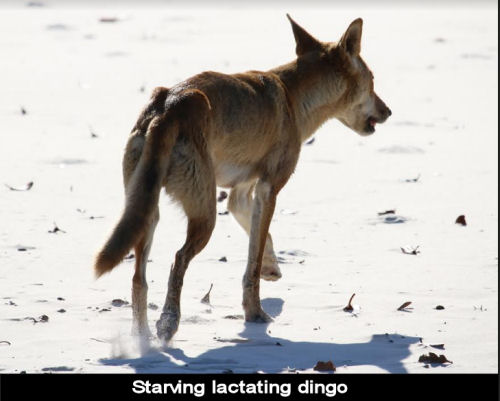
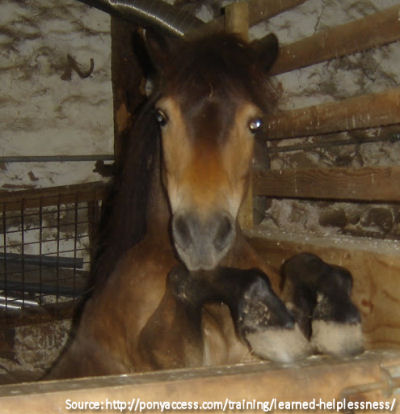


Recent comments